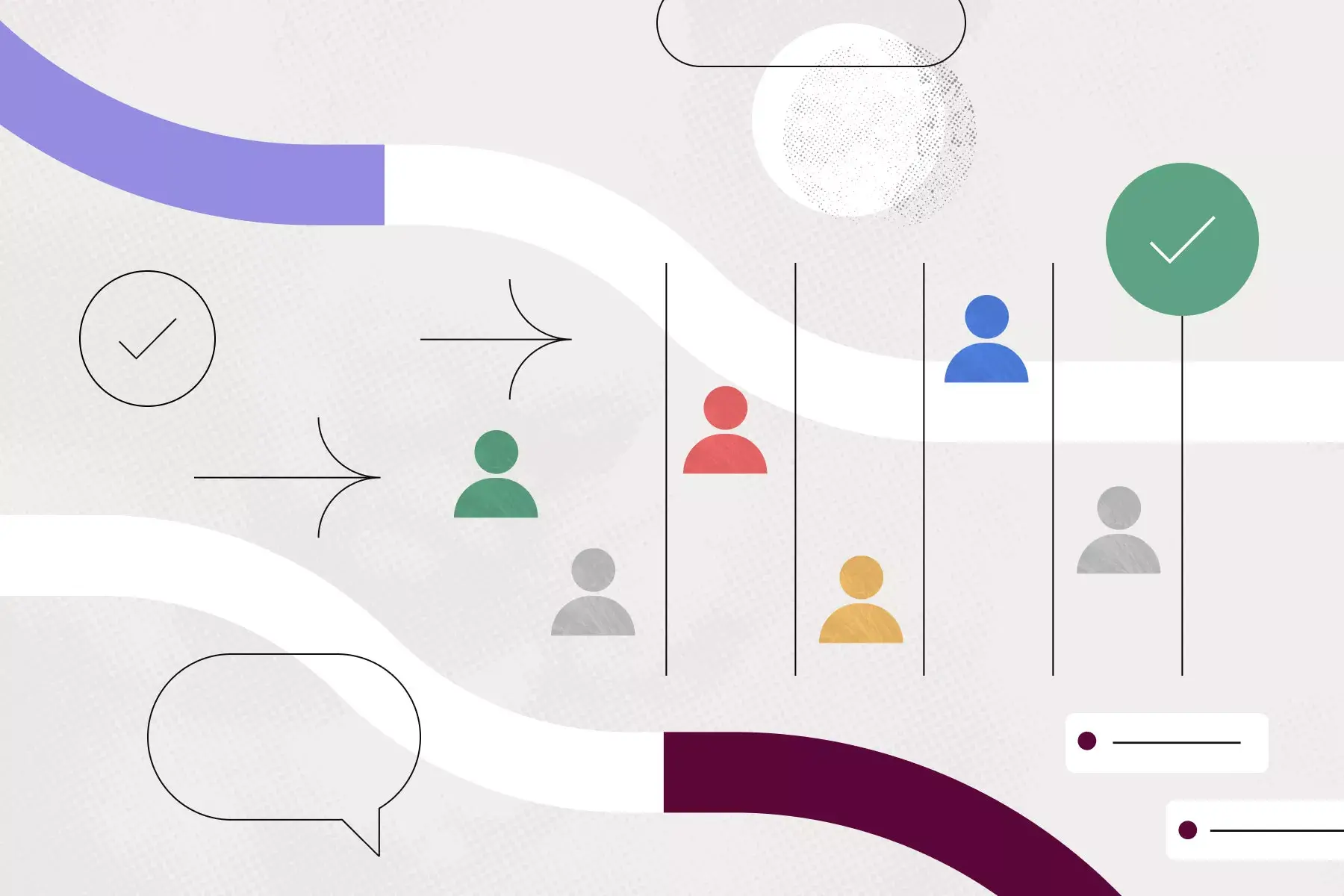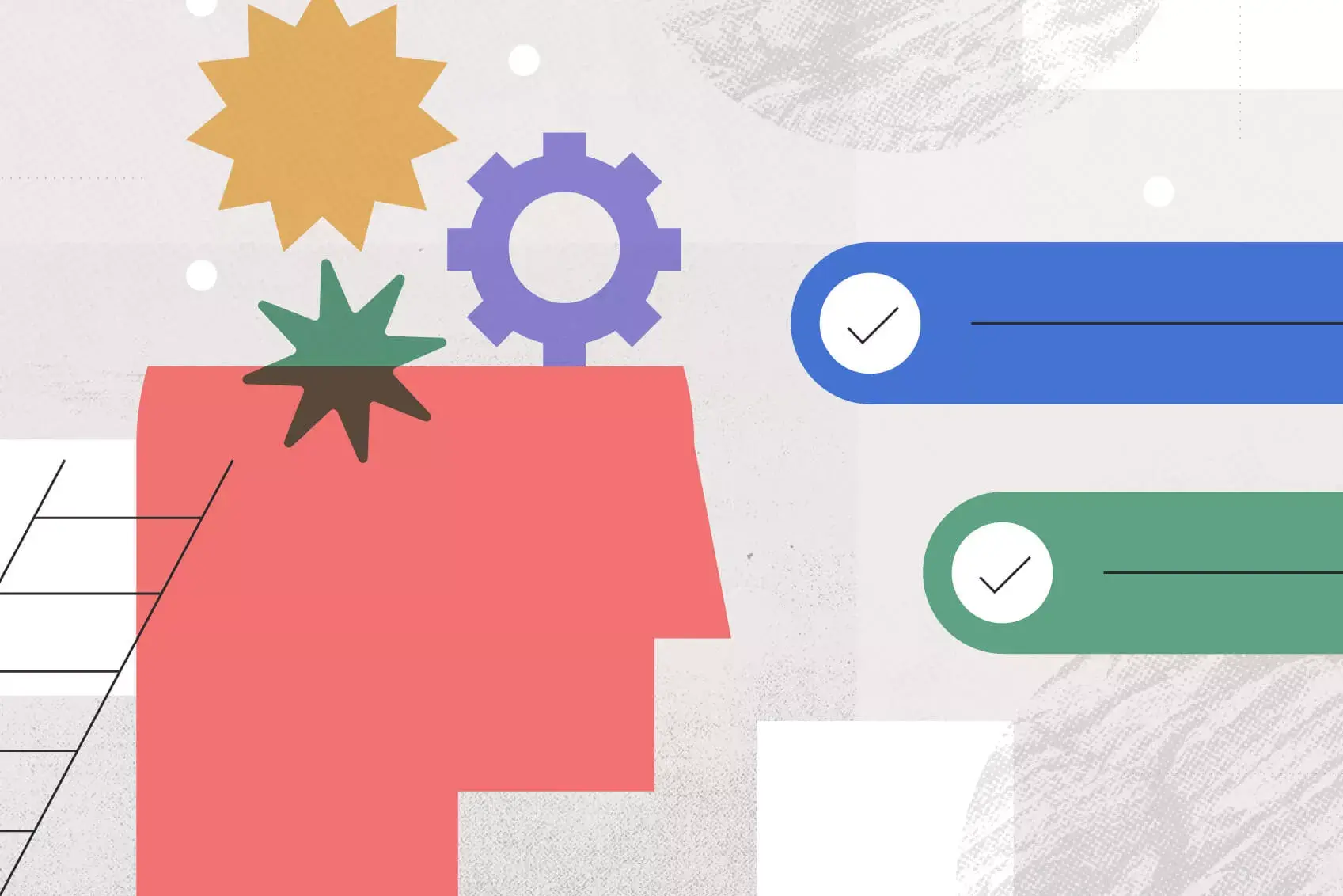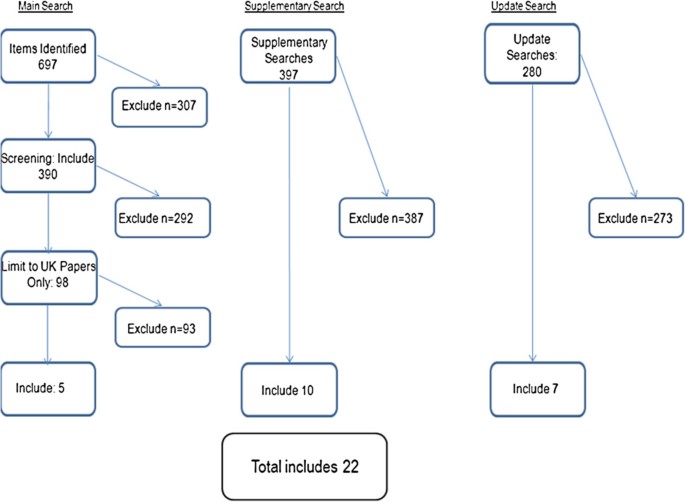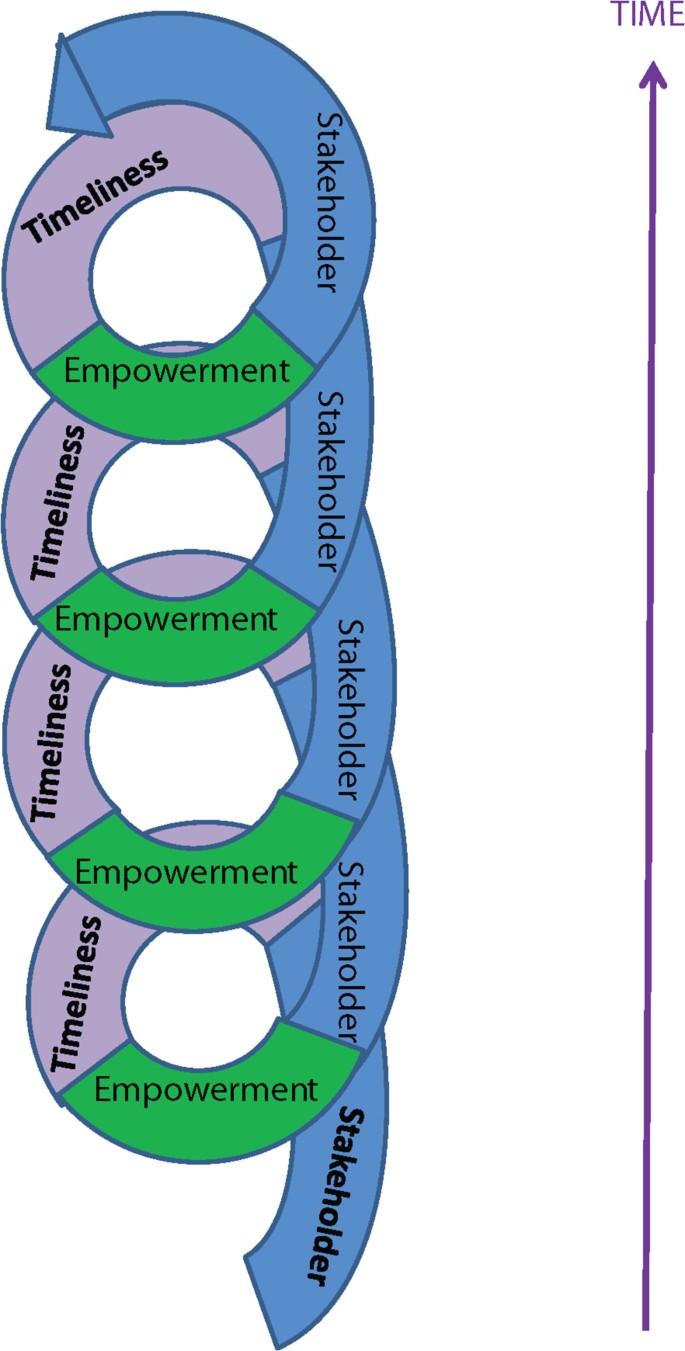Self-Management Essay
Introduction, self-management strategy, time management, assignment completion, organization skills, recording grades.
Self-management is a process that revolves around behavioral intervention or change that teaches students to recognize their behaviors, strengths and set behavioral goals to improve their focus on their studies (Borich, 2007).
This plan targets 8 th grade students between the age of 13 and 14 years. The strategy aims at helping students manage their time adequately, complete assignments on time, stay organized and learn how to record their grades.
However, this intervention plan becomes effective when there is the cooperation of students who need these skills to improve their studying programs.
Borich (2007) articulates that the strategy is to teach students how to become more self-directed learners through nurturing motivation and behavioral changes, which will enable them to attain study skills, and consequently, enhance self-management.
Time management is all about self-discipline whereby one sets a well-structured work schedule that they ought to follow.
The students should always prioritize activities in a way that the more demanding and difficult tasks are worked on first and the rest later (Slavin, 2009).
A student should come up with a strategy that is effective in helping them complete and return assignments on time. They also need organization skills and strategy that will help them in recording their grades.
The strategy revolves around a sequence of processes that will cultivate self-drive and desire for an individual to succeed academically.
All these processes are the ones that encompass self- management, which effectively helps students to master and practice purposeful learning and study.
Behavioral change is the major drive in this strategy; it involves changing one’s character and having a positive attitude towards life (Smaldino, Lowther & Russell, 2008).
Creating a simple schedule like a “ to do list ” is effective in helping a student. For example, a particular student can plan, prioritize, and break things into smaller and manageable subprograms.
The student will ensure that all-important tasks are accomplished on time. It is through this that students will become time conscious since they are their own managers, and can be able to set time for their undertakings by themselves.
The teacher should teach students how to make the “ to do list ” telling them how it works. This would be like;
- Explaining the contents of the “ to do list ”, which are usually all the tasks to be undertaken.
- Showing them how to write down the tasks, which start by the more prioritized ones to the less prioritized ones.
- Moreover, the teacher should teach which tasks to prioritize; this should mostly be based on their urgency and complexity.
Student should prioritize their assignments. This strategy should help a student since the individual will have more energy to start with most difficult tasks.
Their utmost goal should be completing them, and, therefore, as a teacher I will assign them only the crucial tasks so as to avoid inconveniencing their other responsibilities especially since they spend most of their time in school.
The fact that one starts with the more prioritized assignments is just a way of balancing the energy that one has by utilizing the first fresh moment with harder task and going for the rest as one gets exhausted.
This in a way will help them maintain their composure until the completion of the assignments. In order to show students how it works, the teacher can assign students a test and demonstrate how the strategy works in improving efficiency, speed and accuracy.
The test will entail hard and easy tasks; by starting with the harder ones the teacher will demonstrate how this strategy works.
The teacher will allow some students to start with hard tasks and others with the easy ones just to make the point; it is obvious that students that start with hard task with finish quicker.
Helping students with organization skills is essential as it makes them more responsible. Organization success results from a rigid routine. Students also need lessons on how to come up with checklists for time allocation and strictly following the schedules (Linn & Gronlund, 2009).
This should be like a diary whereby the teacher checks it on a daily basis to ensure it is filled out. The teacher will hold a one on one session with each student to show them how it works.
The task is meant to be performed by student and so the teacher only helps the student start up and get everything right.
With a time allocation checklist, students will develop a routine that has replaced bad habits such as unpreparedness and forgetfulness with proper ones (Slavin, 2009).
Students should come up with a plan and a strategy that helps in recording their grades. A well-organized file is an effective strategy in recording their grades (Borich 2007). Keeping the grade record helps the student in tracking their class performance.
Students may not understand how important this is, but by explaining to them, it may help them become more responsible in matters affecting their future. The plan is to make them get used to using assessment form to record their grades where they can constantly monitor them.
As a teacher, all I have to do is help them learn how to use them and leave the rest to them to adopt and incorporate in their learning strategies.
The student according to his/her own personal attributes and character should devise specific methods of learning that will enhance academic success. The teacher should also provide guidelines of methods for learning to the students and discuss the importance of time.
Conclusively, it is through self-awareness that they are able to identify their strengths and weaknesses, and therefore know how to enhance their existing methods.
Borich, G. (2007). Effective Teaching Methods: Research based Practice. Upper Saddle River, New Jersey: Pearson Publishers.
Linn, R., Miller, M. & Gronlund, N. (2009). Management and assessment in Teaching. Upper Saddle River, New Jersey: Pearson Publishers.
Slavin, R. (2009). Educational Psychological: Theory and Practice . Boston, MA: Pearson.
Smaldino, S., Lowther, D. & Russell, J. (2008). Instructional Technology and Media for Learning. Upper Saddle River, New Jersey: Pearson Publishers.
- Chicago (A-D)
- Chicago (N-B)
IvyPanda. (2023, October 31). Self-Management Essay. https://ivypanda.com/essays/self-management/
"Self-Management Essay." IvyPanda , 31 Oct. 2023, ivypanda.com/essays/self-management/.
IvyPanda . (2023) 'Self-Management Essay'. 31 October.
IvyPanda . 2023. "Self-Management Essay." October 31, 2023. https://ivypanda.com/essays/self-management/.
1. IvyPanda . "Self-Management Essay." October 31, 2023. https://ivypanda.com/essays/self-management/.
Bibliography
IvyPanda . "Self-Management Essay." October 31, 2023. https://ivypanda.com/essays/self-management/.
- Self-Management: Becoming an Independent Learner
- Developing a Self-Management Plan for a Patient
- Career Mobility and Career Self-Management Skill
- Self-Management Application in Human Resource Field
- Self-Management for Enhancing Teaching and Learning
- Self-Management Programs for Schizophrenia
- Pain Reduction Using Self-Management Strategies
- Parental Intervention on Self-Management of an Adolescent With Diabetes
- Cultural Challenges in Providing Self-Management Education Support
- “Self-Management Experiences Among Men and Women...” by Mathew
- Human Development and Learning
- Finance Course in High School
- Selection of the gender of correctional officers
- Research Programme for Preschool Students
- Moral Panic from Implementing Stern Security Measures
- SUGGESTED TOPICS
- The Magazine
- Newsletters
- Managing Yourself
- Managing Teams
- Work-life Balance
- The Big Idea
- Data & Visuals
- Reading Lists
- Case Selections
- HBR Learning
- Topic Feeds
- Account Settings
- Email Preferences

Managing Oneself
- Peter F. Drucker

Throughout history, people had little need to manage their careers—they were born into their stations in life or, in the recent past, they relied on their companies to chart their career paths. But times have drastically changed. Today we must all learn to manage ourselves.
What does that mean? As Peter Drucker tells us in this seminal article first published in 1999, it means we have to learn to develop ourselves. We have to place ourselves where we can make the greatest contribution to our organizations and communities. And we have to stay mentally alert and engaged during a 50-year working life, which means knowing how and when to change the work we do.
It may seem obvious that people achieve results by doing what they are good at and by working in ways that fit their abilities. But, Drucker says, very few people actually know—let alone take advantage of—their fundamental strengths.
He challenges each of us to ask ourselves: What are my strengths? How do I perform? What are my values? Where do I belong? What should my contribution be? Don’t try to change yourself, Drucker cautions. Instead, concentrate on improving the skills you have and accepting assignments that are tailored to your individual way of working. If you do that, you can transform yourself from an ordinary worker into an outstanding performer.
Today’s successful careers are not planned out in advance. They develop when people are prepared for opportunities because they have asked themselves those questions and have rigorously assessed their unique characteristics. This article challenges readers to take responsibility for managing their futures, both in and out of the office.
Success in the knowledge economy comes to those who know themselves—their strengths, their values, and how they best perform.
History’s great achievers—a Napoléon, a da Vinci, a Mozart—have always managed themselves. That, in large measure, is what makes them great achievers. But they are rare exceptions, so unusual both in their talents and their accomplishments as to be considered outside the boundaries of ordinary human existence. Now, most of us, even those of us with modest endowments, will have to learn to manage ourselves . We will have to learn to develop ourselves. We will have to place ourselves where we can make the greatest contribution. And we will have to stay mentally alert and engaged during a 50-year working life, which means knowing how and when to change the work we do.
- PD Peter F. Drucker (November 19, 1909 – November 11, 2005) was an Austrian-born American management consultant, educator, and author whose writings contributed to the philosophical and practical foundations of the modern business corporation. He was also a leader in the development of management education, he invented the concept known as management by objectives, and he has been described as “the founder of modern management.”
Partner Center

How it works
Transform your enterprise with the scalable mindsets, skills, & behavior change that drive performance.
Explore how BetterUp connects to your core business systems.
We pair AI with the latest in human-centered coaching to drive powerful, lasting learning and behavior change.
Build leaders that accelerate team performance and engagement.
Unlock performance potential at scale with AI-powered curated growth journeys.
Build resilience, well-being and agility to drive performance across your entire enterprise.
Transform your business, starting with your sales leaders.
Unlock business impact from the top with executive coaching.
Foster a culture of inclusion and belonging.
Accelerate the performance and potential of your agencies and employees.
See how innovative organizations use BetterUp to build a thriving workforce.
Discover how BetterUp measurably impacts key business outcomes for organizations like yours.
A demo is the first step to transforming your business. Meet with us to develop a plan for attaining your goals.

- What is coaching?
Learn how 1:1 coaching works, who its for, and if it's right for you.
Accelerate your personal and professional growth with the expert guidance of a BetterUp Coach.
Types of Coaching
Navigate career transitions, accelerate your professional growth, and achieve your career goals with expert coaching.
Enhance your communication skills for better personal and professional relationships, with tailored coaching that focuses on your needs.
Find balance, resilience, and well-being in all areas of your life with holistic coaching designed to empower you.
Discover your perfect match : Take our 5-minute assessment and let us pair you with one of our top Coaches tailored just for you.

Best practices, research, and tools to fuel individual and business growth.
View on-demand BetterUp events and learn about upcoming live discussions.
The latest insights and ideas for building a high-performing workplace.
- BetterUp Briefing
The online magazine that helps you understand tomorrow's workforce trends, today.
Innovative research featured in peer-reviewed journals, press, and more.
Founded in 2022 to deepen the understanding of the intersection of well-being, purpose, and performance
We're on a mission to help everyone live with clarity, purpose, and passion.
Join us and create impactful change.
Read the buzz about BetterUp.
Meet the leadership that's passionate about empowering your workforce.
For Business
For Individuals
Why self-management is key to success and how to improve yours

Transform your life
Make meaningful changes and become the best version of yourself. BetterUp's professional Coaches are here to support your personal growth journey.

Jump to section
What is self-management?
Why is self-management so important in an organization, 7 skills to increase your self-management capabilities, 12 tips to sharpen your self-management skills, final thoughts on self-management.
Self-management is a critical workplace skill. This article explores a self-management definition, and tips to improve your self-management skills.
Self-management is our ability to manage our behaviors, thoughts, and emotions in a conscious and productive way.
Someone with strong self-management skills knows what to do and how to act in different situations. For instance, they know how to control their anger when the umpire unfairly calls their child out at a little league game. They know how to avoid distractions while working from home , so they can maintain focus and stay productive. They know what they need to do to achieve their fitness goals — and they follow through.
Self-management means you understand your personal responsibility in different aspects of your life, and you do what you need to fulfill that responsibility.
Self-management and its relationship to emotional intelligence
This self-management definition has its roots in emotional intelligence theory , where this capability may also be referred to as self-regulation. Self-regulation is supported by our capacity for self-awareness , which helps us create conscious access to our thoughts, desires, and feelings. Only once we are aware of these things, can we begin to control and express them appropriately.
Those with well-developed self-awareness and self-regulation are well-positioned to develop a set of self-management skills that support them on their work and personal journeys .
From an organizational perspective, the ability of team members to self-manage is critical to the effective functioning of an organization. Imagine an environment where the majority of those working within it were unable to stay on task, on strategy, and on schedule. That would make it very challenging to complete projects.
Self-management is even more important when we talk about empowering employees across the organization to be more innovative and resourceful. When every team member understands their responsibilities, goals, and what it takes to achieve them, they can make better decisions and do their part to achieve the team and organization objectives . Part of effective self-management with empowerment is that employees make good decisions about when to seek additional help or input.
Do you ever catch yourself staying up late to watch one more episode of your favorite TV show, even when you know you have a busy workday ahead? Have you ever missed a deadline because you pushed off a big project for too long? Have you ever become frustrated at one of your direct reports for not completing a project according to your guidance?
These are all signals that you may need to work on your self-management capabilities. Self-management can be learned and refined by mastering these related skills:
- Role clarity. Those with role clarity know what our responsibilities are, who our work matters to and how we are measured. We also know who we are dependent on to get our work done. In short, we have a good sense of how we fit into the system and how our work serves the organization. Let’s follow the story of Ibrahim as an example. Ibrahim is a product manager for a software provider. He knows that his job is to develop product plans and strategies to address the needs of the market, and the products he creates affect the success of the sales team. He also knows that his team doesn’t build the products, so he is dependent on the development team to translate his functional requirements into products.
- Goal alignment: Organizational success relies upon team members working together to reach a common goal . In order for this to work with a team of self-managed individuals, each of us must understand the big picture, and align our own goals with those of the organization. This will allow us to stay on track and maintain sight of what we’re working toward. In our example, Ibrahim connects with his executive team and learns that the key strategy for the year is to move “upmarket” into the enterprise space and investment funding is to be focused on this new capability. Ibrahim then knows that he must understand the unique needs of that market and begin to develop a plan to create new functionality to address them.
- Strategic planning. The next skill in this progression, strategic planning, is the ability to understand what we need to do in order to support organizational goals. We work backward from the desired future state in order to determine what we need to do in order to get there. For example, Ibrahim creates plans to work with marketing to set up customer focus groups, assesses his team’s resourcing and skills for fit, and engages with technical architects to understand any scaling limitations within the platform.
- Priority-setting. Now that we know what we need to do, we need to set priorities so we can achieve our goals. This can help ensure we get to the most important tasks and projects, even as other demands on our time arise. In our example, Ibrahim sets his priorities and decides he needs one day each week for the next three months to get through the first phase of his plan. To accomplish this, he blocked off time on his calendar to work on this project, and he pushed out less important projects by communicating with stakeholders.
- Self-awareness. The ability to consciously access our thoughts, desires, and feelings can help us control our behaviors. This, in turn, can have a direct impact on our performance, and how others perceive us. For example, as Ibrahim works through his plan, he begins to notice some anxious feelings within his body and finds himself ruminating at night. He begins to sense his “ ego attachment ” to the opportunity to succeed in the eyes of others and a sense of worry about whether he is the right person for this project.
- Emotional regulation. Being self-aware of our feelings is a prerequisite to regulating them. For example, fear can be distressing and provoke a fight or flight-type reaction if we aren’t able to elevate it to our consciousness. Ibrahim’s self-awareness allows him to understand his fear that he may not be the right person for the task at hand. He’s able to overcome this emotion by thinking rationally about his strengths and how they apply to any market segment. This allows him to refocus on what he does best, and work through his discomfort.
- Self-care. The only person who can truly be responsible for our care is ourselves. Thriving as an individual starts with nurturing ourselves. Many of us carry ingrained beliefs that serving others is our calling, or self-sacrifice is noble, and thinking about ourselves is selfish. The fact is, we need to be at our best to do our best and if we don’t practice self-care , we begin to erode our capacity to contribute. How many of us have hit a “tough stretch” at work where we put in 80 hours a week for several weeks, only to find our clarity of thought and productivity declining? For Ibrahim, he had been through this before. Big work assignments had created an imbalance in his life before, so he knew going in that he had to create a structure for himself by planning time for exercise, and to use proven techniques for him to be able to leave open tasks at work in order to allow time for family. He replaced “selfish” with “self-ish”.
Even those with strong self-management capabilities can falter now and then. Perhaps you didn’t get much sleep last night, and let your emotions get the better of you at a team meeting. Or maybe you got so bogged down in urgent tasks, that you lost sight of what was truly important. It happens to the best of us.
Here are some ways you can sharpen your skills and improve how you self-manage.
- Keep your promises. There are two parts to keeping your promises. First, do what you said you would do (DWYSYWD). It creates trust with others and within yourself. Second, be careful what you say yes to. Your job is not to be a hero. It is to stay focused on your role and to work to your strengths. Know your boundaries, but apply compassion as you hold them.
- Align to the right level of engagement. Appropriate engagement varies from the executive table to individual contributors. There is a continuum from strategy to execution that moves from “why” to “what” to “how”. Keep your focus on the right point for your role. As a middle manager, for example, your job is to translate the “why” of strategy into the “what” of discreet projects. It isn’t your job to figure out how to do those projects.
- Focus on what you can control. No matter how good the plan we make, we are not in control of, or responsible for, everything that happens around us. What we are in control of is how we respond to the impact of these circumstances. Fred Kofman , the author of Conscious Business , likes to ask “how are you response-able?” What is the best action you can take right now?
- Be a player, not a victim. If you begin to feel things like “this isn’t fair” or “why didn’t they meet the deadline?” you are likely seeing yourself as a victim. How can you move from victim to player? A player works with intention rather than being controlled by external events. They can often find themselves engaged more productively by evoking a coaching stance, being creative to propose solutions, or respectfully challenging the status quo.
- Know who you are (and who you aren’t). Keep an inventory of your strengths in mind, and as you plan your work, assign yourself work that fits these strengths. The corollary here is that you also know what you aren’t good at, which means finding others who are. For example, I’m aware that I am strong in looking at the new requirements and building solutions to address them. I am poor at (and disinterested in) fixing things already in use, so I always look to have a trouble-shooter around me.
- First things first. If we have a good plan we know the critical items we have to get done. We also know that there will be many demands/requests for our time helping others meet their objectives. We need to stake out time on our calendars for our work first, while still allowing enough time to be supportive of others and to stay in tune with the organization. By doing this, you control which items of lesser priority get your time.
- Meetings with yourself. Make time for yourself to stay on plan. At a minimum, set time aside for a one-hour weekly meeting where you take stock of progress, catalog problems, notice opportunities, and update your plans for the next week, month, or quarter. If taking work home with you is a problem, you might do this daily to “check out” of the office so you know where to pick up in the morning.
- Nurture yourself. You can’t do your best if you aren’t at your best. Know that you will be most effective if you eat well , focus on physical wellbeing, and get at least seven hours of sleep daily.
- Take breaks. It is very easy to get caught up in work, and being tied to your desk is counterproductive. Taking breaks allows time to release stress and recharge . Get creative: visit a colleague, get some water, go out for a walk in nature, or call your partner. Just get away from work for a few minutes several times a day.
- Practice mindfulness. Introduce the habit of mindfulness and meditation into your day. When we enter a state of meditation, it is just as helpful to our brains and bodies as sleep. Spending 5-10 minutes, a couple of times each day, can create new energy for us.
- Avoid “coveting.” Coveting is defined as a yearning to possess or have something. When we do this, we attach our happiness to future outcomes which can provoke feelings of stress in the present about achieving those outcomes. Keep your energy in the present, knowing that good work now leads to good outcomes later.
- Don’t multitask. The idea of multi-tasking has somehow been given a badge of honor. The fact is that human minds don’t work that way. We are wired to do one thing, and then switch tasks. Switching tasks requires energy to refocus, so the more we do it the more time and energy we waste.
Self-management is a critical workplace skill that we can all improve. We’re only human, after all. Take some time to consider in what ways you excel at self-management, and where you might improve.
Stay conscious of your thoughts, desires, and feelings as you go through your day, and take note of those you need to work on. Acknowledging the need for improvement is a big step toward attaining it.
Lead in: Self-management is a critical workplace skill . This article explores a self-management definition, and tips to improve your self-management skills.
Abstract: Self-management is a critical workplace skill that can—and should—be developed. Learn what it is, and how to improve your own self-management skills.
BetterUp Fellow Coach, PCC
Self-management skills for a messy world
How to organize your life (and keep it that way), how to develop the 12 management skills you need most, unlock your team’s superpowers with effective team management, 7 management skills to guide teams through turbulent times, 8 time management skills to help reclaim your work-life balance, why soft management skills are necessary for any leader, leadership versus management: how they benefit teams, our 12 favorite ted talks about procrastination management, similar articles, situational leadership®: what it is and how to build it, what is strategic plan management and how does it benefit teams, being your authentic self is easier said than done but worth it, what is self-efficacy definition and 7 ways to improve it, impression management: developing your self-presentation skills, discover how the johari window model sparks self-discovery, self directed learning is the key to new skills and knowledge, stay connected with betterup, get our newsletter, event invites, plus product insights and research..
3100 E 5th Street, Suite 350 Austin, TX 78702
- Platform Overview
- Integrations
- Powered by AI
- BetterUp Lead
- BetterUp Manage™
- BetterUp Care™
- Sales Performance
- Diversity & Inclusion
- Case Studies
- Why BetterUp?
- About Coaching
- Find your Coach
- Career Coaching
- Communication Coaching
- Life Coaching
- News and Press
- Leadership Team
- Become a BetterUp Coach
- BetterUp Labs
- Center for Purpose & Performance
- Leadership Training
- Business Coaching
- Contact Support
- Contact Sales
- Privacy Policy
- Acceptable Use Policy
- Trust & Security
- Cookie Preferences

Essay on Self Management
Students are often asked to write an essay on Self Management in their schools and colleges. And if you’re also looking for the same, we have created 100-word, 250-word, and 500-word essays on the topic.
Let’s take a look…
100 Words Essay on Self Management
Understanding self-management.
Self-management refers to the ability to regulate one’s emotions, thoughts, and behaviors in different situations. It involves setting personal goals, making plans, and then working towards achieving them.
Importance of Self-Management
Good self-management skills are crucial for success in life. They help us control our actions, make wise decisions, and stay focused on our goals. They also help us cope with stress and overcome challenges.
Ways to Improve Self-Management
Improving self-management involves setting realistic goals, planning your time wisely, staying organized, and maintaining a positive attitude. It also involves practicing self-discipline and persistence.
In conclusion, self-management is a vital life skill that helps us achieve our goals and lead a productive and fulfilling life.
250 Words Essay on Self Management
Introduction.
Self-management, a cornerstone of personal growth, refers to the ability to regulate one’s thoughts, behaviors, and feelings to reach personal goals. It encompasses a broad array of skills including time management, emotional regulation, self-motivation, and decision-making.
In an era of rapid change, self-management is crucial for adapting to new environments and challenges. It enables individuals to take responsibility for their actions and decisions, fostering personal growth and independence. Moreover, it enhances productivity by helping individuals prioritize tasks and manage time effectively.
Components of Self-Management
Self-management is composed of several elements. First, self-awareness involves recognizing one’s strengths, weaknesses, and emotions. Second, self-regulation encompasses managing disruptive emotions and impulses. Third, motivation involves the drive to achieve goals, even in the face of adversity. Fourth, empathy, understanding others’ emotions, is key to maintaining relationships. Lastly, social skills, managing relationships to move people in desired directions, are vital.
Developing Self-Management Skills
Developing these skills requires practice and patience. Self-reflection, mindfulness, and feedback from others can enhance self-awareness. Emotional intelligence can be improved through practices like meditation. Motivation can be fostered by setting challenging yet achievable goals. Empathy can be enhanced by active listening and open-mindedness. Lastly, social skills can be developed through teamwork and communication.
In conclusion, self-management is a critical skill in today’s fast-paced world. It empowers individuals to take control of their lives, fosters personal growth, and enhances productivity. Through continuous learning and practice, we can enhance our self-management skills and navigate life’s challenges more effectively.
500 Words Essay on Self Management
Introduction to self-management.
Self-management is a crucial skill that pertains to the ability to manage one’s time, emotions, behavior, and thoughts in a way that promotes personal growth and success. It is a multidimensional concept, encompassing a broad range of capabilities such as self-control, self-assessment, self-motivation, and self-regulation.
In an increasingly complex world, the ability to manage oneself is becoming more important. Self-management enables individuals to take control of their personal and professional lives, leading to increased productivity, improved relationships, and enhanced well-being. It’s the cornerstone of emotional intelligence and a key determinant of life satisfaction.
Self-management comprises several key components. Firstly, self-regulation is the ability to control one’s emotions and behaviors, especially in challenging situations. This skill is vital for maintaining emotional balance and making rational decisions.
Secondly, self-assessment involves evaluating one’s strengths and weaknesses, setting realistic goals, and monitoring progress. This is critical for personal development and achieving success.
Thirdly, self-motivation is the ability to inspire oneself to take action, even in the absence of external rewards or recognition. This intrinsic motivation is a powerful driver of perseverance and resilience.
Self-Management and Academic Success
In the academic context, self-management skills are paramount. They enable students to organize their study time effectively, maintain focus during lectures, manage academic stress, and stay motivated despite challenges. These skills correlate strongly with academic achievement and are often more predictive of success than intellectual ability alone.
Developing self-management skills involves conscious effort and practice. It starts with self-awareness, understanding one’s emotions, thoughts, and behaviors. Regular self-reflection can help identify areas for improvement and devise strategies for change.
Goal setting is another crucial aspect. Setting SMART (Specific, Measurable, Achievable, Relevant, Time-bound) goals can provide direction and motivation.
Moreover, honing emotional regulation skills, such as mindfulness and stress management techniques, can help manage negative emotions and enhance well-being.
In conclusion, self-management is a vital skill in the 21st century. It empowers individuals to take charge of their lives, enhances personal and professional success, and contributes to overall well-being. By developing self-management skills, we can become more resilient, productive, and satisfied in our endeavors. In a rapidly changing world, self-management is not just a skill, but a necessity.
That’s it! I hope the essay helped you.
If you’re looking for more, here are essays on other interesting topics:
- Essay on Management
- Essay on Exam Stress Management
- Essay on Waste Management
Apart from these, you can look at all the essays by clicking here .
Happy studying!
Leave a Reply Cancel reply
Your email address will not be published. Required fields are marked *
Save my name, email, and website in this browser for the next time I comment.
.css-s5s6ko{margin-right:42px;color:#F5F4F3;}@media (max-width: 1120px){.css-s5s6ko{margin-right:12px;}} Join us: Learn how to build a trusted AI strategy to support your company's intelligent transformation, featuring Forrester .css-1ixh9fn{display:inline-block;}@media (max-width: 480px){.css-1ixh9fn{display:block;margin-top:12px;}} .css-1uaoevr-heading-6{font-size:14px;line-height:24px;font-weight:500;-webkit-text-decoration:underline;text-decoration:underline;color:#F5F4F3;}.css-1uaoevr-heading-6:hover{color:#F5F4F3;} .css-ora5nu-heading-6{display:-webkit-box;display:-webkit-flex;display:-ms-flexbox;display:flex;-webkit-align-items:center;-webkit-box-align:center;-ms-flex-align:center;align-items:center;-webkit-box-pack:start;-ms-flex-pack:start;-webkit-justify-content:flex-start;justify-content:flex-start;color:#0D0E10;-webkit-transition:all 0.3s;transition:all 0.3s;position:relative;font-size:16px;line-height:28px;padding:0;font-size:14px;line-height:24px;font-weight:500;-webkit-text-decoration:underline;text-decoration:underline;color:#F5F4F3;}.css-ora5nu-heading-6:hover{border-bottom:0;color:#CD4848;}.css-ora5nu-heading-6:hover path{fill:#CD4848;}.css-ora5nu-heading-6:hover div{border-color:#CD4848;}.css-ora5nu-heading-6:hover div:before{border-left-color:#CD4848;}.css-ora5nu-heading-6:active{border-bottom:0;background-color:#EBE8E8;color:#0D0E10;}.css-ora5nu-heading-6:active path{fill:#0D0E10;}.css-ora5nu-heading-6:active div{border-color:#0D0E10;}.css-ora5nu-heading-6:active div:before{border-left-color:#0D0E10;}.css-ora5nu-heading-6:hover{color:#F5F4F3;} Register now .css-1k6cidy{width:11px;height:11px;margin-left:8px;}.css-1k6cidy path{fill:currentColor;}
- Inspire & Impact Collection |
- What is self-management? (7 skills to i ...
What is self-management? (7 skills to improve it)

Self-management is your ability to regulate behaviors, thoughts, and emotions in a way that better serves you and your work. Learn the 7 most important self-management skills to become a better leader.
It’s certainly not easy, but self-management can be learned. And it’s worth doing—as you improve your self-management skills, you’ll naturally grow as a leader. From the top project management skills to your own personal development, we’ll go over what self-management is and the seven soft skills to develop it.
Anatomy of Work Special Report: The unexplored link between impostor syndrome and burnout
Burnout and impostor syndrome have historically been studied as two separate phenomena. In this report, we connect the dots to help leaders slow burnout and increase employee retention.

What is self-management?
Self-management is your ability to regulate your behaviors, thoughts, and emotions in a productive way. This means excelling in both personal and professional responsibilities for the benefit of yourself and your team.
![essay self management [Inline illustration] What is self-management? (Infographic)](https://assets.asana.biz/transform/6d0a4983-d1c5-43f9-bfa7-120b94884097/inline-productivity-self-management-1-2x?io=transform:fill,width:2560&format=webp)
Effective self-management leads to better emotional intelligence by supporting your self-awareness and well being. This means staying on top of social cues and respecting your own personal needs.
Self-management is an important leadership quality that doesn’t always come naturally, but with the right tools and practice, you can develop. Let’s dive into the top seven self-management skills to develop.
What are the 7 self-management skills?
Developing self-management skills requires a certain level of self-awareness—you need to know yourself before you can regulate yourself. Start slow and embrace the process, remembering that these skills are ongoing.
Skill 1. Time management
Time management is when you control how you use your time. This means prioritizing your most important tasks first and managing your daily to-do list . A leader who has good time management skills can manage their time effectively without the need for external help.
Having good time management skills can help you stay engaged and avoid procrastination . As a leader, time management allows you enough time to both stay on top of your own work and empower others to do the same.
Skill 2. Self motivation
Self motivation is your ability to get motivated and proactively accomplish daily tasks. It takes a certain level of personal responsibility, but practicing self motivation can help you become more self-aware and prioritize what's important to you.
![essay self management [Inline illustration] Self motivation (Abstract)](https://assets.asana.biz/transform/d34ead0a-1bad-4dc3-bb5e-4b9936dc9c40/inline-productivity-self-management-2-2x?io=transform:fill,width:2560&format=webp)
This is similar to intrinsic motivation , which is motivation that comes from within. Like self motivation, intrinsic motivation stems from a variety of personal factors. For example, your internal motivator for volunteering could be that it makes you feel fulfilled. External motivators, on the other hand, are influenced by factors outside yourself. For example, working faster because you’re scared of the repercussions if you work slower.
Enjoying the work you do is an important part of staying motivated and engaged throughout your workday. Plus, liking the work you do can help you inspire your team to do their very best. To practice internal motivation, work towards goals that excite you and fuel your sense of purpose.
Skill 3. Stress management
Leaders often deal with stress, but to be good at self-management you need to embody healthy stress management. Without stress management, you can suffer from overwork and, eventually, burnout .
Leaders with good stress management skills approach work in a focused manner by connecting their initiatives to larger goals. When you know which task is most important and how project deliverables are tied to team goals, you can better prioritize work and will likely feel more fulfilled doing it. Engaging with your work in this way is a form of self-care, and it can help reduce your stress levels and keep you level headed.
Skill 4. Adaptability
Being adaptable means you have the confidence and ability to pivot when changes arise. This is especially important for leaders who work in a fast-paced environment where project changes occur often.
For example, imagine a new project comes up that’s a higher priority than the one you’ve been working on for the last couple of weeks. Instead of becoming stressed or frustrated, you can adapt to this change and move forward with openness and curiosity. This is an important skill to have to maintain flexibility.
While being adaptable may be uncomfortable at times, it can make you a great leader as you have the ability to tackle anything that comes your way. It also empowers your team to do the same.
Skill 5. Decision making
To be effective, it’s essential for leaders to develop decision-making skills that reduce confusion and increase team empowerment. Problem solving and addressing issues can help you grow your decision-making skills.
Like all the skills we’ve looked at so far, decision making is something you can learn. Start by sharpening your critical thinking skills and learning how to analyze key information when problems arise. And use data-driven decision making to ensure your actions come from data rather than guesswork, so fewer issues will arise down the road.
Skill 6. Goal alignment
Setting goals means you prioritize the most important projects that have the highest impact on your business.
This means being able to see the bigger picture and knowing what’s best for your team members and organization. In the long run, this will generate better results and boost team morale .
Goal alignment consists of three main skills:
Goal setting. When goal setting, be sure to identify current pain points, forecast growth objectives, and analyze your current resource allocation plans —all of which can help you set informed goals. Use the SMART goals framework to make sure your goal is specific, measurable, achievable, realistic, and time-bound.
Goal communication. Not only does this involve managing your team’s goals, but it always involves aligning them to your organization’s overall goals. That way, your team members understand how their work ladders up to larger objectives. This requires transparent communication and aligned teamwork .
Goal tracking. Not only is it important to set and communicate goals, but it’s also important to track them. This is critical for connecting daily work to larger goals and seeing how your team is progressing over time.
Skill 7. Personal development
Personal development is key for all team members, but especially for leaders. In order to build your team’s knowledge, you first need to build your own. This means taking the time to attend workshops, take courses, and connect with industry experts to develop your management skills.
This means taking the time to attend workshops, take courses, and connect with industry experts—all of which can help you develop your management skills.
By continuing to develop your skills, you can empower your team to do the same. Not only does this mean individual career development, but it also means growth for the good of the company.
Examples of self-management
Analyzing examples of self-management in the workplace can help you understand the skills you need to develop and embody healthy self-management.
These examples involve refining the way you see yourself in order to develop strong self-esteem. Here are some examples of self-management to better understand how you can empower yourself to be a better leader in the workplace:
Example 1: Setting goals and aligning them to the larger picture.
Team lead Daniela Vargas wants to increase returning customers by 10% this year in order to meet her organization’s growth goals. To start, she writes up a business case and schedules a meeting with the head of operations and product development. During that meeting, Daniela walks the department heads through her plan to rebrand an existing product line that hasn’t performed well in the past. The leaders agree to the plan and Daniela gets to work to develop a detailed work breakdown structure .
Example 2: Stress management and time allocation.
Ray Brooks starts his day by going through his daily to-do list. He notices he has a few tasks that need to be completed and an overdue task that he didn’t get to yesterday. He also gets a meeting invite for a new project that is flagged as a top priority. Instead of becoming overwhelmed and frustrated with the tasks on his plate, Ray goes to work to reorganize his schedule. Critically, Ray realizes that he can’t get everything done that day. To get his best work done, he prioritizes the new project meeting, since it’s a top priority. He then spends the rest of his day tackling his high priority tasks while maintaining the quality of his work. Instead of working all night, which Ray knows will stress him out and take away from his family time, he decides that his least important tasks will need to wait until the next day.
In both of these situations, the leader made rational decisions based on what was best for themselves and their teams. They were quick to make intelligent decisions while considering their own well-being in order to get good results.
Managing your behaviors and emotions
Managing your thoughts and behaviors can help you become better at self-management and, in turn, stronger as a leader. By streamlining your individual organizational systems, you’re proactively working towards becoming the best leader that you can be.
Learn additional ways to support your team with work management software. From increased productivity to team visibility, effectively managing your work doesn’t have to be challenging.
Related resources

15 types of employee performance reviews

Don’t like giving feedback? These 20 tips are for you

How to delegate effectively: 10 tips for managers

Why you should prioritize employee empowerment

SEL for Students: Self-Awareness and Self-Management
What are they.
According to the Collaborative for Academic, Social, and Emotional, Learning ( CASEL ), social-emotional learning (SEL) is “the process through which all young people and adults acquire and apply the knowledge, skills, and attitudes to develop healthy identities, manage emotions and achieve personal and collective goals, feel and show empathy for others, establish and maintain positive relationships, and make responsible and caring decisions.”
Self-awareness and self-management are two of the five components that make up CASEL’s model of SEL .
Self-Awareness is simply the ability to be aware of one’s inner life –one’s emotions, thoughts, behaviors, values, preferences, goals, strengths, challenges, attitudes, mindsets, and so forth– and how these elements impact behavior and choices across contexts.
A student who is self-aware may notice her fearful emotional response as she is about to take a test. She may feel her heart beat faster and her stomach clench, making her thoughts race as she worries about failing the test. To get out of the test, she considers telling her teacher that she feels sick, but in the end, she recognizes that this behavior is a result of her emotions and thoughts running amok, and she accepts that these reactions can occur when she experiences anxiety.
Skills that develop self-awareness include:
- Identifying and analyzing one’s emotions, and how they affect others
- Understanding the relationship between one’s emotions, thoughts, values, and behaviors
- Integrating personal and social identities
- Identifying personal, cultural, and linguistic assets
- Demonstrating honesty and integrity
- Examining prejudices and biases
- Experiencing self-efficacy
- Having a growth mindset
- Developing interests and a sense of purpose
Self-management is the ability to navigate and shift in a healthy way one’s thoughts, emotions, and behaviors in order to make decisions and reach goals that benefit oneself and others.
A new sixth grader who is anxious about starting middle school remembers learning from her fifth grade teacher that when she is feeling scared, she can change how she feels by thinking differently about the situation. So, instead of dreading her new school, this student decides to view it as an adventure—one that might bring her new friends, wonderful teachers, and exciting opportunities.
Self-management skills include:
- Regulating and expressing one’s emotions thoughtfully
- Demonstrating perseverance and resilience to overcome obstacles
- Sustaining healthy boundaries
- Identifying and using stress management strategies
- Setting personal and collective goals
- Using planning and organizational skills
- Showing the courage to take initiative
- Demonstrating personal and collective agency
- Maintaining attention
- Using feedback constructively
- Practicing self-compassion
Ultimately, self-awareness and self-management are closely linked. For example, being able to stop and calm down when one is upset (self-management), requires skills like recognizing and labeling the emotions and considering how they might be affecting one’s behavior choices (self-awareness).
For a deeper dive into the science and practical school-based examples of this science in action, click on the following topics:
SEL for Students: The Basics of Emotions SEL for Students: Emotion Regulation SEL for Students: Emotions and Learning SEL for Students: Emotions and Culture
Why Are They Important?
Overall, research reveals that students with social and emotional skills perform better academically, have stronger relationships with peers and teachers, experience greater well-being, and engage in less risky behavior. In addition, SEL skills positively impact education, employment, and mental health outcomes into adulthood .
More specifically, several components of self-awareness and self-management show the following outcomes:
“Emotion knowledge” is key to student success.
- Young children who can accurately read facial expressions of emotions and assign an appropriate emotion to a situation perform better academically , have fewer behavior problems , and demonstrate greater prosocial (kind, helpful) behavior .
- These skills continue to help them as the years go on: first graders who showed little knowledge of emotions were more likely to report feelings of loneliness, sadness, and anxiety in fifth grade.
- Teens who score high in emotional intelligence have greater academic success, fewer mental health issues, and better attitudes towards teachers and schools. (Note that beliefs about emotions vary by culture. Click here for more information.)
Managing emotions in a healthy way gives students a head start.
- Students of all ages who can regulate their emotions —or monitor, evaluate, and change their emotional responses—perform better academically , have stronger relationships with teachers and peers, experience greater mental well-being , and engage in less risky behavior. (Note that emotion regulation strategies and outcomes vary by culture. Click here for more information.)
Using self-control to keep studying instead of checking Instagram really matters.
- Students who exhibit self-control —or the ability to regulate thoughts, feelings, and actions when temptation strikes—have better grades (at every level), are more likely to graduate from high school and college, and have higher test scores.
- Self-control also leads to better interpersonal skills , higher self-esteem, and lower risky behavior.
A “growth mindset” benefits students’ academic and social lives.
- Research shows that students with growth mindsets related to intelligence tend to perform better academically .
- New research suggests that developing students’ social and emotional mindsets may increase well-being and happiness , boost social competence , reduce biases , and promote prosocial (kind and helpful) behavior . For more information, click here .
Goals bolster student achievement.
- Studies have found that “hope” —or the ability to achieve goals—is linked to greater academic achievement, creativity, and problem-solving skills, as well as less depression and anxiety.
- Students high in “hope” know how to create a roadmap to reaching a goal, including alternate routes when obstacles arise, and also have the belief, motivation, and confidence to achieve their goals.
Practice Collections

Seeds of Self-Compassion

Art on Purpose

Assessing Your School Climate

Using Art to Build Bridges

Courage Blooms

Exploring Intellectual Humility through Astronomical Discoveries

Inspiring Climate Awareness Through Gratitude

Courage Challenge

Courage Creatures

Courageous and Compassionate Citizens

Developing the Courage to Speak Up

The Bystander’s Dilemma: What Does Courage Look Like?

Finding Awe in Collective Acts of Kindness

Contemplating Awe-Inspiring Systems

Creating Musical Playlists for the Classroom

Just Because (Broaden Your Sense of What’s Comfortable and Familiar)

Navigating Challenging Emotions During Difficult Conversations

In Harmony with Sound

GGIE Online Courses for Educators
Do you want to dive deeper into the science behind our GGIE practices? Enroll in one of our online courses for educators!
You Might Also Like

Teaching and Learning for the Greater Good

Self-Management: The Art Of Making Yourself More Valuable At The Workplace
Tom was a brilliant student who landed a good job at a reputed marketing agency. But that’s when the problems…

Tom was a brilliant student who landed a good job at a reputed marketing agency.
But that’s when the problems started.
Though he was excellent at academics, he wasn’t punctual or efficient at work. While his lethargy and dependence on others didn’t hamper his studies, it had a severe impact on his work. He would miss deadlines, report late for client or team meetings, and rarely reach the office on time. He soon became unpopular among his colleagues and eventually lost his job.
The problem with Tom wasn’t a lack of knowledge or capability, but a lack of self-management skills.
What is self-management?
Self-management is the art of using certain skills to boost your productivity and performance at work.
Self-management skills empower you to set goals and channel your thoughts, feelings, and actions towards achieving your goals.
Here are some of these skills:
Organization: .
A lot of people simply take things as they come and don’t plan ahead. While the thrill of uncertainty and surprise might be useful in fun activities, it can derail your professional growth.
By organizing your plans, prioritizing critical activities, and executing them on time, you can improve your performance.
Goal setting:
Our goals are our destinations. Without a destination, one can only wander without reaching anywhere. Hence, by setting workplace goals, we can decide on things that need to be done and chart a course to complete those tasks.
Time management:
There are only so many hours in a day. If you don’t learn to prioritize and focus on your tasks, you won’t be able to execute them. Setting up and sticking to timelines is an essential part of self-management.
Self-motivation:
You don’t have to rely on external motivation to drive yourself. You must have noticed how walking even short distances becomes tiring when you are fatigued or not driven to reach your destination.
However, a self-motivated person will find joy in every step and will try to reach the destination faster.
Accountability:
Taking responsibility for your actions is a key ingredient of self-management. Successful people own their thoughts and decide how they want to act. By becoming accountable to yourself, you will be able to analyze your work practically and draft effective strategies for execution.
Improving Self-Management Skills
The components of self-management make it clear that it is a process that can be internalized through focus and effort. You can become better at it by paying attention to the following steps.
Strength assessment:
You must identify your strong points and positive traits. Focus more on sharpening those areas. For instance, if you are good with web technology, then focus on acquiring skills such as coding, technical writing, graphics, or Artificial Intelligence (AI).
Prioritization:
You must clearly outline the tasks that are critical to goal achievement and focus on executing them.

Process setting:
You need to set your tasks according to the order of importance. The most effective way is to use an organizer or a time-management app on your smartphone. If you don’t like relying on technology, you can create a filing system to manage your workflow.
Set demanding timelines:
Assign a clear deadline to every task or stage of a project. Avoid distractions and stick to a schedule to increase your productivity at work.
Be patient:
Being calm and patient helps in enhancing clarity of thought and decision-making.
Self-management skills at the workplace
Remember Tom?
Despite all his brilliance, he failed to succeed at his workplace because he lacked self-management. However, had he adapted to the situation and made changes to his working style, he could have been a very successful person.
Well, you don’t need to go down Tom’s path.
Here are some self-management tips that can make you more efficient and help you succeed in your career.
Be punctual and prepare well for your meetings and projects
Plan the next day’s schedule before leaving office
Maintain well-structured action plans and agendas
Clearly define the goals and objectives of projects and tasks
Assess the project plans at the outset or during the early stages of execution
Self-management is the process of preparing for the future in a result-oriented manner. By taking charge of your current scenario, setting goals, and executing important tasks in a timely fashion, you can achieve your objectives.
Self-management is critical not only for professional growth but also for the overall development of your personality. It is the process through which you realize your potential and streamline it to achieve your goals.
Harappa’s Interpreting Self course can help you grasp the importance of self-management and create a path of workplace success.
Explore topics such as the meaning of resilience , what is self-awareness , charisma , and resilience examples in our Harappa Diaries section and take charge of your growth.

Have a language expert improve your writing
Check your paper for plagiarism in 10 minutes, generate your apa citations for free.
- Knowledge Base
- College essay
How to Write About Yourself in a College Essay | Examples
Published on September 21, 2021 by Kirsten Courault . Revised on May 31, 2023.
An insightful college admissions essay requires deep self-reflection, authenticity, and a balance between confidence and vulnerability. Your essay shouldn’t just be a resume of your experiences; colleges are looking for a story that demonstrates your most important values and qualities.
To write about your achievements and qualities without sounding arrogant, use specific stories to illustrate them. You can also write about challenges you’ve faced or mistakes you’ve made to show vulnerability and personal growth.
Table of contents
Start with self-reflection, how to write about challenges and mistakes, how to write about your achievements and qualities, how to write about a cliché experience, other interesting articles, frequently asked questions about college application essays.
Before you start writing, spend some time reflecting to identify your values and qualities. You should do a comprehensive brainstorming session, but here are a few questions to get you started:
- What are three words your friends or family would use to describe you, and why would they choose them?
- Whom do you admire most and why?
- What are the top five things you are thankful for?
- What has inspired your hobbies or future goals?
- What are you most proud of? Ashamed of?
As you self-reflect, consider how your values and goals reflect your prospective university’s program and culture, and brainstorm stories that demonstrate the fit between the two.
Prevent plagiarism. Run a free check.
Writing about difficult experiences can be an effective way to show authenticity and create an emotional connection to the reader, but choose carefully which details to share, and aim to demonstrate how the experience helped you learn and grow.
Be vulnerable
It’s not necessary to have a tragic story or a huge confession. But you should openly share your thoughts, feelings, and experiences to evoke an emotional response from the reader. Even a cliché or mundane topic can be made interesting with honest reflection. This honesty is a preface to self-reflection and insight in the essay’s conclusion.
Don’t overshare
With difficult topics, you shouldn’t focus too much on negative aspects. Instead, use your challenging circumstances as a brief introduction to how you responded positively.
Share what you have learned
It’s okay to include your failure or mistakes in your essay if you include a lesson learned. After telling a descriptive, honest story, you should explain what you learned and how you applied it to your life.
While it’s good to sell your strengths, you also don’t want to come across as arrogant. Instead of just stating your extracurricular activities, achievements, or personal qualities, aim to discreetly incorporate them into your story.
Brag indirectly
Mention your extracurricular activities or awards in passing, not outright, to avoid sounding like you’re bragging from a resume.
Use stories to prove your qualities
Even if you don’t have any impressive academic achievements or extracurriculars, you can still demonstrate your academic or personal character. But you should use personal examples to provide proof. In other words, show evidence of your character instead of just telling.
Many high school students write about common topics such as sports, volunteer work, or their family. Your essay topic doesn’t have to be groundbreaking, but do try to include unexpected personal details and your authentic voice to make your essay stand out .
To find an original angle, try these techniques:
- Focus on a specific moment, and describe the scene using your five senses.
- Mention objects that have special significance to you.
- Instead of following a common story arc, include a surprising twist or insight.
Your unique voice can shed new perspective on a common human experience while also revealing your personality. When read out loud, the essay should sound like you are talking.
If you want to know more about academic writing , effective communication , or parts of speech , make sure to check out some of our other articles with explanations and examples.
Academic writing
- Writing process
- Transition words
- Passive voice
- Paraphrasing
Communication
- How to end an email
- Ms, mrs, miss
- How to start an email
- I hope this email finds you well
- Hope you are doing well
Parts of speech
- Personal pronouns
- Conjunctions
First, spend time reflecting on your core values and character . You can start with these questions:
However, you should do a comprehensive brainstorming session to fully understand your values. Also consider how your values and goals match your prospective university’s program and culture. Then, brainstorm stories that illustrate the fit between the two.
When writing about yourself , including difficult experiences or failures can be a great way to show vulnerability and authenticity, but be careful not to overshare, and focus on showing how you matured from the experience.
Through specific stories, you can weave your achievements and qualities into your essay so that it doesn’t seem like you’re bragging from a resume.
Include specific, personal details and use your authentic voice to shed a new perspective on a common human experience.
Cite this Scribbr article
If you want to cite this source, you can copy and paste the citation or click the “Cite this Scribbr article” button to automatically add the citation to our free Citation Generator.
Courault, K. (2023, May 31). How to Write About Yourself in a College Essay | Examples. Scribbr. Retrieved April 2, 2024, from https://www.scribbr.com/college-essay/write-about-yourself/
Is this article helpful?

Kirsten Courault
Other students also liked, style and tone tips for your college essay | examples, what do colleges look for in an essay | examples & tips, how to make your college essay stand out | tips & examples, "i thought ai proofreading was useless but..".
I've been using Scribbr for years now and I know it's a service that won't disappoint. It does a good job spotting mistakes”

Mastering Self Management
- January 30, 2007
WorkMatters Tips Issue #13 – January 30,2007 Publisher: Gayle Lantz mailto:[email protected] https://workmatters.com WorkMatters, Inc. —————————————————————– A quick tip to help leaders and executives who need to motivate their teams and themselves, and catapult their business.
Receive this ezine direct to your desktop: https://workmatters.com/signup/ —————————————————————– Mastering Self Management
One of the most common challenges executives face is self management — the ability to prioritize and complete tasks to achieve a specific outcome within a particular time frame. This is what you want from those you manage, right? But it can be just as challenging to do yourself.
If you feel energized about your work and you have plenty of time and energy to enjoy your personal life, you’re probably good at self management. On the other hand, if you feel overwhelmed, incapable of meeting deadlines/commitments, or if you’re losing too much sleep, you may need to practice some self management skills.
Here’s how:
* Prioritize your tasks. That means coming up for air to take a look at the bigger picture — the vision for your business (and your life). Then, do the most critical tasks first each day.
* Minimize disruptions. Learn how to say "no," or how to help others understand and respect the ways in which you work best. Interruptions are inevitable, but you can choose to handle them differently.
* Communicate clearly and succinctly. The more clearly you communicate, the less confusion you create, the less other people need to clarify. You can operate more efficiently.
* Make realistic promises. Can you really follow through on all you say you’ll do? Be prepared to let go of some commitments that aren’t as important.
Self management is a constant leadership challenge. You have more control over yourself than you think. Don’t beat yourself up if you find yourself off task. Once you realize it, adjust quickly to get yourself back on track…without losing sleep!
PS For more comments and ideas on self management, read my latest blog post at: http://gaylelantz.typepad.com/weblog/ —————————————————————– ON THE LIGHTER SIDE:
Sometimes I lie awake at night, and ask,"Where have I gone wrong?" Then a voice says to me,"This is going to take one more night." Charles M. Schulz —————————————————————– REPRINT: You may reprint items from "WorkMatters Tips" in your own print or electronic newsletter. But please include the following paragraph:
Reprinted from "WorkMatters Tips," a free ezine produced by Gayle Lantz featuring tips for leaders and executives who want to grow themselves, their team and their business. Subscribe at https://workmatters.com/signup
Don’t forget to SHARE:

The 8 Reflections of Self-Management

Emotional Intelligence, or EI, can have a significant impact on your career as a business professional. Part of mastering your emotions is the ability to take responsibility for your own behaviour, which is known as self-management.
What is Self-Management?
Self-management is the way you maintain control of your conduct in the workplace to ensure that you’re highly productive and inspiring others. This skill allows individuals to regulate their actions, feelings, and thoughts productively. With strong self-management skills, individuals can follow through on their work, be more successful in goal-setting efforts, maximize productivity, and improve workplace performance.
How Self-Management helps
Purposeful self-management can help individuals direct the trajectory of their careers and seek opportunities that get them closer to their goals. Additionally, effective self-management leads to better emotional intelligence, self-awareness, and well-being.
When every team member understands their responsibilities, goals, and what it takes to achieve them through self-management, they can make better decisions and do their part to achieve team and organisational objectives
8 Self-management Reflections
Here are 8 ways to help you improve this important skill to develop a keen sense of positive professional behaviour.
1. Know you have a choice
When anything happens to us, we always have a choice on how we react. We can choose to become emotional and explode, or we can actively take a moment to think about the right course of action and decide how to behave.

By embedding the belief in your mind that you always have a choice, then you’re always in control because you know you can be.
2. Impulse control
Building on the previous point, a big part of self-management is the ability to be aware of our levels of emotion and be highly attuned to them. This means that, should a situation occur that triggers a large emotional response, we can prevent ourselves from an inappropriate display.
To do this, it’s important to reflect on our desires, impulses, drives, and urges, and be mindful of what “pushes our buttons” so that if these occur, we can control ourselves and continue to act professionally.
3. Shake up your routine
When your day-to-day becomes the same over and over, you can slip into a state of comfort. While this is not so much a problem in general, it can make it tricky to evaluate your emotional self. So, try a different type of exercise or undertake something mentally stimulating to break your routine and get more in touch with yourself.
4. Convert emotional energy
When you feel a sense of heightened emotion, such as anger or sadness, it may cause you to experience an outburst that is considered inappropriate in the workplace. However, this vented energy can actually be harnessed and converted from a negative scenario into a positive one instead.

Next time you feel overwhelmed, mad, or frustrated, take a breath and redirect it into motivation instead; motivation to fix the problem and be better.
5. Keep a strict calendar
A calendar will help you focus on your productivity while avoiding procrastination, especially when you decide to commit to whatever you plan without compromise.

Developing a schedule that you stick to can help you gain better control over your goals and output every day.
6. Be mindful of the reality
Understand that people can make mistakes and most of them aren’t intentional. It sounds simple, but often in the heat of urgency and deadlines, when someone makes an error, it can be hard to remember that some things don’t always go to plan.
When the unfortunate happens, stop and re-evaluate the circumstances before you let your emotions take over.
7. Maintain a healthy diet
Your personal well-being has a direct impact on your emotional health, which means that it’s important to eat well and drink plenty of water.

If you’re surviving off several cups of coffee and sugary biscuits, you’re going to be in a completely different state to when you’re eating balanced meals, several times a day, and keeping hydrated.
Starting with the basics can help you manage your emotions.
8. Focus on your interest levels
Self-management takes a level of focus and an active mind to control your emotions. You can’t do this successfully if you’re scattered or distracted. Instead, be patient and take the time to show interest in the topic at hand. When your mind is present, you can manage your emotions far better.
Self-management is a way to best leverage your emotional intelligence and improve your professional conduct. It’s worth investing time into developing it as it can help you focus on your goals towards achieving success.
How Can Lifeology Help You?
Having years of experience assisting people to understand and enhance their Emotional Intelligence, I have helped many people discover their true potential in both their working and personal lives.
Although our Emotional Intelligence becomes more ‘set in’ with age, it is malleable and, along with self-awareness and coaching, can be focused on and enhanced effectively, to improve career growth and success.
Feel free to contact me to find out how!
For more information, contact Kerryn to unlock your emotional potential today.
Share on Social Media
Coaching is available.
Call: +61 419 718 719 Office Hours:
- Weekdays from 9 am to 5 pm
- Weekends by Appointment Only

12 Factors That Contribute to Personal Success (Part 1)

8 Techniques to Manage Conflict Effectively

Harness the Potential of Active Listening

The Power of Smiling at the Workplace

Reflections and Resolutions: Looking Back to Move Forward:
Our services.
- Insight Articles
- Privacy Policy
Copy short link
Self-Leadership and Management
Introduction.
Self-leadership refers to the procedure of influencing oneself to develop the self-motivation and self-direction required to execute management tasks effectively. Browning (2018) identifies leadership as a nurtured or cultivated art that starts with self-leadership, which has a direct correlation with the public one. Self-leadership enhances a manager’s emotional intellect by reinforcing his/her cognizance of self. Furthermore, it entails a person’s capacity to reflect on his/her self-weaknesses and strengths, which consequently influences his/her ability to learn about others and self. The paper provides a detailed assessment of my management strengths and weaknesses, the strategies to use to build my leadership capabilities, and the approach used to inspire followership.
Assessment of “Self” Highlighting Managerial Strengths and Weaknesses
I conducted an online self-assessment survey on leadership skills available at the MindTools website which consisted of 18 questions on various leadership concepts (“How Good Are Your Leadership Skills,” n.d.). I attained a score of 77; according to the website’s score interpretation, my leadership skills are excellent. However, the website underscored the need to evaluate the areas where maximum points were not attained and identify strategies to better my performance.
Some of the managerial conceptualizations measured in the survey include personal characteristics and transformational leadership skills (“How Good Are Your Leadership Skills,” n.d.). Components evaluated under individual factors included emotional intelligence, self-confidence, and positive outlook and attitude. Proficiencies assessed under transformational management skills included the ability to be an excellent role model and provide a compelling vision for the future (How Good Are Your Leadership Skills,” n.d.). It also involved motivating individuals to deliver the vision, offering stimulation and support, and managing performance effectively.
High scores were recorded in the following competencies: self-confidence, ability to motivate people to deliver the vision, being an excellent role model, emotional intelligence, and effective performance management. Low scores were vivid in the following categories: positive outlook and attitude, the capability to offer a compelling perspective vision, and the capacity to provide support and motivating force. All the components assessed in this particular survey are crucial in enhancing one’s leadership success. Therefore, I must employ the necessary strategies to better my expertise in the poorly scored competencies and reinforce the identified leadership strengths.
Strategies to Build My Management Capabilities
Strengthen my emotional intelligence skill.
Emotional intelligence refers to the self-perceived capacity or skill to distinguish, evaluate, and manage the emotions of oneself and others. Some of the approaches to improve this particular skill include:
- Utilizing an assertive communication style, which will enhance my ability to communicate my opinions and needs effectively while upholding other people’s respect (Shah, 2018).
- Empathizing with other people: empathy is a trait that demonstrates emotional strength, and it fosters one’s capacity to relate with others on a fundamental human level. It also triggers mutual understanding and esteem among people with dissenting opinions/different circumstances (Van Wingerden & Van der Stoep, 2018).
- Using active listening skills, responding positively to critiques, and being approachable and sociable.
Strengthen Proficiencies in Decision-Making
Sound decision-making skill is a critical proficiency for managers within an organization. From supervising team members to leading important workplace meetings, being a successful leader demands that one understands how to analyze or evaluate complex business issues and execute a plan for resolving these problems. Vohra et al. (2015) identify three primary building blocks for an effective decision-making procedure: constructive conflict, consideration, and closure. Constructive conflict, according to Vohra et al. (2015), relates to the process of engaging the workforce in the decision-making procedure; this particular approach typically attracts diverse debates and viewpoints and vitalizes creative approaches to problem-solving.
Proper decision-making also integrates the need to reasonably consider the perspective of every stakeholder involved in this activity before determining the ultimate solution. Vohra et al. (2015) support this argument by indicating that the failure to acknowledge each stakeholder’s view during decision-making may impact their commitment to implementing the proposed solution. On the other hand, closure is a function that aims at guaranteeing the full alignment of all stakeholders before proceeding to the next step during the development of decisions. By ensuring that the listed components are included during various decision-making procedures, I could become a primary contributor at my workplace and influence the context within which decisions are enacted.
Reinforce My Self-Awareness Skill
Practicing self-awareness is essential in providing insight into one’s emotions and their impact on those around them. A high self-awareness level is a crucial skill for managers, and, according to Khoshhal and Guraya (2016), it typically distinguishes high-performance leaders from their peers within the workplace. Self-awareness is a crucial precept of emotional intelligence, which necessitates an honest assessment of one’s weaknesses, strengths, and introspection. By engaging in self-assessment and looking up to trusted co-workers to gain insight into my managerial activities, I could develop a path for my professional advancement that focuses on the practices and competencies that need improvement.
Building Trust
Trust is an aspect that can reap multiple benefits within the organization. According to Shah (2018), individuals working at high-trust companies typically report high levels of engagement, increased productivity, and less distress. Gaining employees’ trust will be done by initiating attempts to forge deep connections with them by participating in small talks before meetings and seeking to know more regarding their lives outside their work scope. I will also promote inclusive dialogue about professional and personal differences and welcome diverse viewpoints during these discussions.
Improve My Communication Skills
Strong communication skills represent a hallmark of any effective leader. Being in a leadership role often involves handling complex situations in the business and ensuring that one’s team has the tools and information they require to succeed. When faced with challenges such as navigating change in the organization, I will be transparent and straightforward about the imminent tasks. I will instill the workforce with a shared vision regarding the benefits the company will reap from the impending transition. The recapitulation of the change plan and provision of updates will also be done continuously to ensure that workers are aligned and comprehend how their roles factor into the broader corporate objectives.
Enroll in Management Training Programs
Beyond my day-to-day activities, lifelong learning can be an appropriate strategy to bolster my skills in leadership. Through additional training, e.g., online management courses, one can learn or be conversant with new tools and technologies that enable him/her to shape various organizational training procedures to his/her advantage (Vohra et al., 2015). Individuals can also gain the necessary exposure to a group of peers with different perspectives and backgrounds who can inform them of their managerial approach and help them grow professionally.
Managing and Leading Others
A plan to inspire followership through leadership and motivation theories.
Motivation refers to a state of mind, typified by enthusiasm and energy, which drives a person to work in a particular manner to attain desired goals. Motivation theories offer in-depth comprehension of how individuals behave and the various motivational factors (Van Wingerden & Van der Stoep, 2018). Leadership theories, on the other hand, are schools of thought developed to elucidate why and how specific individuals become managers. These theories highlight the behaviors and traits that people can adopt to improve their leadership proficiency (Khoshhal & Guraya, 2016). Various conceptualizations included in the theories mentioned above play a crucial role in influencing followership when adequately implemented within the workplace.
To inspire followership, I would ensure that every worker feels supported and appreciated within the organization. This can be done by initiating regular check-ins with employees outside their yearly performance review and giving feedback where necessary. According to a survey by Van Wingerden and Van der Stoep (2018), workers whose leaders provide feedback every week are over five times more likely to report that they receive effective feedback. They are three times more likely to feel motivated to perform outstandingly at work, and two times more likely to be involved at work. When delivering feedback to workers, I will ensure that the conversation is less formal and focus on the individual’s progress towards attaining organizational goals. Furthermore, I will help employees to develop an action plan for the future and affirm my duty as a trusted advisor as they proceed through the subsequent steps. The concepts mentioned above have been echoed by various motivation and leadership theories, for instance, the Hawthorne effect, the three-dimension theory of attribution, and transformational leadership theory.
Additionally, approaches that aim to ensure that the workforce is fairly compensated and granted bonuses, rewards, and recognitions, as per their performances, will be implemented. The activity mentioned above will be in line with the concepts included in these theories: Hertzberg’s two-factor theory, transformational leadership theory, and expectancy theory. Team members will also be included in various decision-making activities, and their opinions acknowledged throughout the entire process before the ultimate solution is implemented. Employee training, opportunities for professional advancement, and scholarships will also be offered regularly to address their needs regarding career development and personal growth. Maslow’s hierarchy of needs theory emphasizes the ideas mentioned above; this theory underscores the need for leaders to comprehend every person’s specific needs and work to satisfy these demands. Lastly, the organization’s operations and practices will be based on the developed mission, vision, and stipulated procedures; this particular approach will be as per the principles of transformational leadership theory and the Hawthorne effect.
Principles of Management
Management principles are usually classified into primary categories such as planning, organizing, leading, controlling, and staffing. Each of these management fundamentals is implacably different and critical in enhancing a company’s success. Planning, often considered the most basic administrative function, relates to the process of developing organizational goals and constructing a framework to attain these objectives (Skrynkovskyy et al., 2020). It involves creating a firm’s overall purpose and operations, as well as ascertaining the approaches, actions, and resources deemed essential in achieving the company’s mission and vision.
Organizing is a precept that underscores the establishment of operational models to attain institutional goals. It involves developing person-to-person and person-to-work relationships, which cohesively function towards realizing the organizational objectives. According to Skrynkovskyy et al. (2020), organizing is usually considered the vehicle for attaining the business mission. It incorporates the following activities: arrangement, structuralizing, and designing the internal business environment to improve its procedures.
Leading, on the other hand, refers to the hierarchal framework of an organization. It entails the authoritative and influential capacities of individuals in an organization. This function mentioned above involves articulating the establishment’s vision, motivating and inspiring workers using effective communication, persuasion, and influence, and energizing employees (Skrynkovskyy et al., 2020). Leadership is a critical element of management because it establishes and guides how business operations are conducted.
Controlling is the cumulative action of ensuring that the organization’s activities comply with the established plans. Controlling and planning are widely perceived as related since controlling allows leaders to effectively realize their plans (Skrynkovskyy et al., 2020). It enables managers to monitor the effectiveness of their leadership approaches while guiding how business activities are accomplished. Furthermore, it allows leaders to analyze how well they are attaining the set objectives, improve performance and productivity, and implement necessary procedures to help one develop comparable and measurable standards for decision making. Staffing entails the selection and recruitment of workers in the firm.
To sum up, self-leadership enables one to develop a sense of who he/she is, his/her capabilities and future direction/plans, and the skills needed to improve an individual’s communication, behaviors, and emotions. As per the self-assessment survey, my strengths as a manager include high self-confidence and emotional intelligence, being a good role model, and possessing the capacity to motivate individuals to attain an organization’s mission and vision. My weaknesses involve a negative outlook and attitude, the inability to provide a vision for the future, and the incapacity to offer support and motivation. Approaches that aim to better one’s managerial skills and attract followership ought to be implemented by leaders to ensure the organization’s success.
Browning, M. (2018). Self-leadership: Why it matters. International Journal of Business and Social Science , 9 (2), 14–18.
How good are your leadership skills ? (n.d.). MindTools. Web.
Khoshhal, K. I., & Guraya, S. Y. (2016). Leaders produce leaders and managers produce followers: A systematic review of the desired competencies and standard settings for physicians’ leadership. Saudi Medical Journal , 37 (10), 1061–1067. Web.
Shah, B. (2018). Effective leadership in organization . European Journal of Business and Management , 3 (3), 1–5. Web.
Skrynkovskyy, R. M., Sopilnyk, L. I., & Tsyuh, S. I. (2020). Improving the enterprise development model: New solutions based on the principles of management, marketing and economic diagnosis. Bìznes Inform , 4 (507), 191–199. Web.
Van Wingerden, J. & Van der Stoep, J. (2018). The motivational potential of meaningful work: Relationships with strengths use, work engagement, and performance. PLoS ONE , 13 (6), e0197599. Web.
Vohra, N., Rathi, N., & Bhatnagar, D. (2015). Developing leadership skills among EMBA students: Innovations in design. Vikalpa , 40 (1), 15–27. Web.
Cite this paper
- Chicago (N-B)
- Chicago (A-D)
StudyCorgi. (2022, March 23). Self-Leadership and Management. https://studycorgi.com/self-leadership-and-management/
"Self-Leadership and Management." StudyCorgi , 23 Mar. 2022, studycorgi.com/self-leadership-and-management/.
StudyCorgi . (2022) 'Self-Leadership and Management'. 23 March.
1. StudyCorgi . "Self-Leadership and Management." March 23, 2022. https://studycorgi.com/self-leadership-and-management/.
Bibliography
StudyCorgi . "Self-Leadership and Management." March 23, 2022. https://studycorgi.com/self-leadership-and-management/.
StudyCorgi . 2022. "Self-Leadership and Management." March 23, 2022. https://studycorgi.com/self-leadership-and-management/.
This paper, “Self-Leadership and Management”, was written and voluntary submitted to our free essay database by a straight-A student. Please ensure you properly reference the paper if you're using it to write your assignment.
Before publication, the StudyCorgi editorial team proofread and checked the paper to make sure it meets the highest standards in terms of grammar, punctuation, style, fact accuracy, copyright issues, and inclusive language. Last updated: March 23, 2022 .
If you are the author of this paper and no longer wish to have it published on StudyCorgi, request the removal . Please use the “ Donate your paper ” form to submit an essay.
- Research article
- Open access
- Published: 16 August 2014
A qualitative synthesis of diabetes self-management strategies for long term medical outcomes and quality of life in the UK
- Julia Frost 1 ,
- Ruth Garside 2 ,
- Chris Cooper 3 &
- Nicky Britten 1
BMC Health Services Research volume 14 , Article number: 348 ( 2014 ) Cite this article
12k Accesses
43 Citations
8 Altmetric
Metrics details
Qualitative research on self-management for people with Type 2 Diabetes Mellitus (T2DM) has typically reported one-off retrospective accounts of individuals’ strategies. The aim of this research was to identify the ways in which self-management strategies are perceived by people with T2DM as being either supportive or unsupportive over time, by using qualitative findings from both longitudinal intervention studies and usual care.
A systematic review of qualitative literature, published between 2000 and 2013, was conducted using a range of searching techniques. 1374 prospective qualitative papers describing patients’ experiences of self-management strategies for T2DM were identified and screened. Of the 98 papers describing qualitative research conducted in the UK, we identified 4 longitudinal studies (3 intervention studies, 1 study of usual care). Key concepts and themes were extracted, reviewed and synthesised using meta-ethnography techniques.
Aspects of self-management strategies in clinical trials (e.g. supported exercise regimens) can be perceived as enabling the control of biomarkers and facilitative of quality of life. In contrast, aspects of self-management strategies outwith trial conditions (e.g. self-monitoring) can be perceived of as negative influences on quality of life. For self-management strategies to be sustainable in the long term, patients require a sense of having a stake in their management that is appropriate for their beliefs and perceptions, timely information and support, and an overall sense of empowerment in managing their diabetes in relation to other aspects of their life. This enables participants to develop flexible diabetes management strategies that facilitate quality of life and long term medical outcomes.
Conclusions
This synthesis has explored how patients give meaning to the experiences of interventions for T2DM and subsequent attempts to balance biomarkers with quality of life in the long term. People with T2DM both construct and draw upon causal accounts as a resource, and a means to counter their inability to balance medical outcomes and quality of life. These accounts can be mediated by the provision of timely and tailored information and support over time, which can allow people to develop a flexible regimen that can facilitate both quality of life and medical outcomes.
Peer Review reports
By 2030, 500 million adults worldwide will have diabetes, with 2.5 million predicted in the UK [ 1 ]. UK policymakers have described the burden associated with the progressive nature of diabetes in terms of direct costs to the NHS and associated healthcare support services; indirect costs to the economy due to loss of productivity; and the personal impact of diabetes, and complications for patients and their families [ 2 ]. The National Service Framework for Diabetes called for a ‘skills-based approach [to] support self-care by improving knowledge, blood glucose control, weight and dietary management, physical activity and wellbeing’ ([ 3 ]:16); and the associated NICE guideline for Type 2 Diabetes Mellitus (T2DM) recommends that people with diabetes should be offered structured education [ 4 ]. However, a review of service organisation and delivery in the UK identified a lack of health services research in diabetes; variability in the quality and range of support that is provided to people with diabetes; and a recognition that supporting self-care behaviours is challenging for many groups of patients with diabetes [ 5 ].
Randomised controlled trials of educational interventions, specifically for T2DM in the UK, have proved inconclusive. A trial of an expert patient education intervention found that it improved glycaemic control, reduced total cholesterol level, body weight, BMI and waist circumference, reduced requirement for diabetes medication, increased consumption of fruit and vegetables, enjoyment of food, knowledge of diabetes, self-empowerment, self-management skills and treatment satisfaction; but there was no overall improvement in quality of life at fourteen months [ 6 ]. A trial of diabetes education and self-management for ongoing and newly diagnosed (DESMOND) programme found that while those in the intervention group reported positive improvements in beliefs about their illness, there was no difference in HbA1c or dimensions of quality of life at twelve months [ 7 ]. Furthermore, a recent systematic review established that tailored interventions for T2DM, hypertension and heart disease had no impact on medication adherence, self-monitoring, exercise, smoking or diet control, while having a modest impact on screening, dietary fat intake and levels of physical exercise [ 8 ].
An observational study found that people with T2DM rationalise their understanding and response to diabetes by externalising control of their condition to health care professionals who are responsible for their care [ 9 ]; while a qualitative study with participants from the DESMOND trial identified that individual orientations (degrees of acceptance or resistance to either their new ‘diabetic’ identity or any perceived consequences of that identity, and perceptions of the required degree of personal responsibility) may mediate both education preference (e.g. group education that is peer or professional led) and ultimately self-management [ 10 ]. While both provide useful insights, they only collected retrospective accounts via one-off interviews [ 11 ]. Given the long term, chronic nature of T2DM this may not capture aspects of change or development in attitudes and behaviours over time.
Existing syntheses of qualitative research (including only non-intervention studies) indicate that patients with T2DM often prioritise the maintenance of their current quality of life over future improvements to their biomarkers. Paterson et al. demonstrated that people learn to balance their diabetes by combining experience with experimenting with strategies for managing their illness [ 12 ]; while Campbell et al. identified that balance required a complex process of understanding and ‘an ability to manipulate dietary and medication regimens in order to live life as fully as possible, rather than limiting social and work activities in order to adhere rigidly to medical advice’ ([ 13 ]:681). More recently, Gommersall et al. have established the salience of culture and gender roles, as well as perceptions of threats to selfhood [ 14 ]. However, we are not aware of any syntheses that have explicitly compared observational and intervention-linked longitudinal qualitative studies of diabetes self-management. Such a synthesis could illuminate the long term sequelae of diabetes self-management strategies, and prove crucial for understanding the impact of the progressive and degenerative nature of diabetes [ 15 , 16 ].
The aim of this qualitative synthesis was to identify the ways in which self-management strategies are perceived by people with T2DM as being either supportive or unsupportive, from prospective qualitative research using data collected on two or more occasions over a twelve month period, and to compare experiences of those taking part in intervention studies and those receiving usual care.
Systematic reviews use a structured approach to identify, appraise and synthesise research [ 17 ]. Here the meta-ethnographic method described by Noblit and Hare was used to conduct this qualitative synthesis [ 18 ]. Meta-ethnography is an interpretive rather than an aggregative approach, which involves the translation of individual qualitative studies into each other, through the re-interpretation and transformation of their theoretical and substantive concepts [ 13 , 16 , 19 ]. We adhered to the enhancing transparency in reporting the synthesis of qualitative research (ENTREQ) statement [ 20 ].
A database search (MEDLINE, EMBASE, Social Policy and Practice, HMIC and PsycINFO, all via OVID) was conducted in February 2013 using terms for diabetes/diabetics (diabet*) combined with a qualitative research methods literature search filter written by the Health Information Research Unit, McMaster University strategy [ 21 ], In addition:
Meta-syntheses of diabetes qualitative research were identified and forwards and backwards citations found;
Key authors were identified and their papers were located and screened;
Key trials were citation chased and searches were made using the trial acronyms as search terms;
Experts in the field were contacted for published and unpublished papers.
References, including titles and abstracts, were then loaded into Endnote X5 [ 22 ], and the search was updated in May 2013.
Papers were included at the title and abstract screening stage [by JF] if they:
Were among adults with T2DM,
Conducted in the UK (reflecting current practice in the National Health Service),
Published since 2000.
Full text papers were obtained and were further screened [by RG, NB] to establish if they:
Used recognised qualitative methods of data collection and analyses,
Used longitudinal qualitative data collection – with two or more periods of data collection
Used follow–up qualitative data collection of at least 12 months.
We appraised the quality of the included papers using a validated appraisal tool [ 23 ] as a means to assess the rigour and validity of the data collection and analysis techniques employed by the research authors (Table 1 ), which informed our analysis of the data [ 24 ].
The research team repeatedly read the studies to identify key themes and concepts, and to identify areas of consonance and dissonance between the included studies. JF produced a structured summary for each paper, and with input from RG and NB, tabulated the key results, concepts and themes for each study, so that they could be compared and contrasted. Quotations from patients and carers (first order data), as well as author interpretations of the data (second order interpretations) were interpreted and integrated by the research team (into third order concepts) to produce a ‘line of argument’ [ 13 , 18 , 19 ].
The purpose of meta-ethnography is to identify where similar concepts and themes from different studies or papers refer to the same entity (congruent synthesis) or to opposing findings (refutational synthesis); this is referred to as the papers’ findings being ‘translated’ into each other [ 18 , 46 , 47 ]. Thus, as interpretations emerged, they were subject to systematic testing within and between the studies, and in consultation with a wider stakeholder group. This group included People with Type 1 or Type 2 Diabetes, members of the South West Peninsula Diabetes Research Network, Diabetologists, General Practitioners (with and without a special interest in diabetes), the Director of Public Health, and community or hospital based Diabetes Specialist Nurses.
The searches resulted in 1374 abstracts (Figure 1 ). Preliminary screening identified that 98 of these papers described qualitative research conducted in the UK. A full text screen identified only four studies (reported in 15 papers) that used longitudinal data methods over 12 months or more. An updated search in May 2013 identified 280 further abstracts of which seven conference abstracts about the four studies were identified. Similar to a meta-ethnography of patients’ experience of managing anti-depressants we identified two groups of papers early in the synthesis process and grouped them along a timeline [ 48 ]. Reflecting the growing use of longitudinal qualitative methods in medical research more generally, the first group concerned serial qualitative studies that were nested within randomized controlled trials of interventions in order to elucidate causal pathways, while the second were stand-alone studies exploring the influence of health services on the conceptualization of illness over time [ 49 ].

Search flowchart. A database search was conducted using terms for diabetes and qualitative research methods, Additional methods included citation chasing and key author/paper identification. Papers were included at the screening stage if they were among adults with T2DM; conducted in the UK; and published since 2000. Full text papers were obtained and screened to establish if recognised longitudinal qualitative methods of data collection and analyses were used.
Six papers concerned three studies where qualitative methods were nested in trials of self-management interventions. The DALY study employed focus groups to explore the impact of an eight week educational programme administered to all trial participants (n = 89) via five trial courses running over a period of one year [ 25 , 26 ]. The Early ACTID study purposively sampled participants from both trial arms and various recruitment sites to elicit patient perspectives of a trial of diet versus diet and exercise versus usual care via face to face and telephone interviews [ 28 ]. The PACCTS study purposively sampled participants from a deprived urban area, and allocated them to four study groups (where HbA1c control was deemed to be ‘good’, ‘bad’, ‘improving’ or ‘deteriorating’), in order to determine the utility of a tele-care support intervention that was titrated to HbA1c results [ 31 – 33 ]. Although the qualitative data collection in the paper by Malpass et al. was only over a period of nine months [ 28 ], its findings were substantiated by data in an associated quantitative paper that extended over twelve months [ 29 ].
Nine papers were about a single sample of patients, recruited from both primary and secondary care within six months of diagnosis with Type 2 Diabetes, and concerning their perceptions of self-management in the context of changes to diabetes service delivery in Scotland. Four papers utilised interviews at baseline six months and 12 months [ 38 – 41 ]; and five papers providing additional data collected at 48 months [ 11 , 42 – 45 ] (Table 2 ). This set of papers provided a rich data set, which variously employed grounded theory, thematic analysis and longitudinal data analysis techniques to interrogate the sixty interviews, in terms of the patients’ perspectives of service delivery [ 39 ] as well as discrete concepts such as control and causality [ 42 , 43 ].
The inclusion of these papers allowed the reviewers to explore any potential influence of either trial design (e.g. a supportive trial environment may enhance the positive impact of the interventions) or study duration (e.g. ongoing information and support, which are central to the underpinning philosophies of the intervention studies, and foster understanding and confidence, and ultimately an enduring self-efficacy). Combining studies with diversity of purpose provides opportunities for comparisons and potentially more fruitful and meaningful insights, than that which may be obtained by synthesising papers that are more obviously methodologically or substantively ‘similar’ [ 50 ].
Using the established synthesis techniques outlined above, the reviewers identified and translated the key concepts in each of the papers (e.g. the individual study authors’ second order interpretations of the ‘raw’ or ‘first order’ patients’ words) into three interlocking third order constructs (Table 3 , first column): Patient as stakeholder (a patient actively engaged with their service provision), Timeliness of support (the appropriate provision of provision and support, often repeatedly, tailored to the current needs and preferences of the patient, and their subjective understanding of their condition), and Empowerment (the willingness and ability of people with diabetes to self-manage in order to achieve purposive and meaningful behaviour change strategies); and from these produced a line of argument about the support needs of people with T2DM (Table 3 ). Subsequent columns in Table 3 summarise the second order concepts, and the narrative ‘translation’ of those concepts, and details of the papers from which they were drawn, which were listed and tabulated so that they could be explored, compared and juxtaposed.We conceive of these three aspects as interlinked and supporting each other, and there is some overlap, but they represent the cornerstones of good support that allow people with T2DM to successfully manage their condition. These aspects can be mutually supporting, leading to a virtuous circle and improved self-management, while their absence may lead to a vicious circle for patients as they become increasingly disempowered, unable to participate in their own self- care and unable to access the support they need to change (Figure 2 ).

Three interlocking concepts. This qualitative synthesis identified three interlocking third order constructs (Patient as stakeholder, Timeliness of support, and Empowerment), and a line of argument that stated that for self-management strategies to be effective, people with diabetes require a sense of ownership of the management of their disease. This can be fostered through the timely provision of information and advice that acknowledges and accounts for their individual circumstances (e.g. disease duration, and prior experience of diabetes management).
Patient as stakeholder
By comparing and synthesising the key concepts in the intervention and usual care studies, a third order concept was developed about the notion of patient as a stakeholder: a patient actively engaged with their service provision. Participants in the intervention studies were strategically encouraged to ‘own’ and actively manage their diabetes, while those in receipt of usual care did not have the advantage of benefiting from the intervention, nor of staff with additional expertise. In its absence they provided their own interpretation of both their condition and their role in its management.
Within the trial of an educational support intervention (PACCTS) self-management was fostered by tele-carers tailoring information to individuals’ needs [ 28 ]. An example is provided of a woman who had had a stroke, where information was provided to her husband to optimise ‘portion control’ [Participant quote, [ 31 ]: 183] at mealtimes, as exercise was not a viable weight-reduction strategy. This advice was subsequently reinforced by the tele-carer acknowledging that weight loss is difficult (using ‘empathy’) and encouragement to the couple to maintain their efforts (‘positive reinforcement’) [Author quotes, [ 31 ]: 183].
Participants receiving an eight week diabetes educational intervention (DALY) similarly valued receiving information that was tailored to their circumstances, in contrast to their previous experience of care:
One participant described the course as an ‘eye-opener’, whilst another said, ‘I’ve learnt more in the first hour here than I’ve learnt in nearly 5 years’. The course provided participants with the details of managing their disease within the context of their everyday lives, with frequent references to learning about ‘individual’ and ‘small things’ [Author quotes, [ 25 ]: 199]
Participants suggested that having nurse tutors who showed ‘integrity, respect and compassion toward them, as well as demonstrating their nursing expertise in diabetes’ fostered a ‘process of moral interaction’ [Author quotes, [ 25 ]: 200]. This facilitated patient participation in both their education, and development of the skills for effective self-management, while nurturing reciprocal health care relationships which are fundamental to ‘quality of life for people with chronic illness’ [Author quote, [ 25 ]: 200].
Respect and reciprocity were also viewed as fundamental precursors to enabling patients to be honest about their ability and desire to self-manage, deemed essential by the PACCTS study authors, for planning sustainable behaviour change beyond the duration of a trial. The tele-carers in the PACCTS study acknowledged that if patients were too regimented in their routines there was the potential to ‘fall off the bandwagon’ [Tele-carer quote, [ 32 ]: 223]; while the participants’ narratives demonstrated how some felt able to try out new management strategies and modify them to fit into their daily routines, and report this to a non-judgmental professional:
‘Other things we discussed were regular food intake. I felt that she really wanted me to have my breakfast at 8, lunch at 12, tea at 4. But I explained that I can not do that. Even when you are getting older, you still have your own way of doing things. We had a discussion about the gap. I would have high readings at lunchtime and she wanted to know the cause. It was probably because I was trying to comply with her regulations but I was not getting out of bed until late, finishing my breakfast 9:30 or 9:45 and then having dinner at 1. So, we decided not to do it like that.’ [Participant quote, [ 32 ]: 224]
In contrast, reflections on ‘usual care’ from participants in the health education study (DALY) reported that health professionals did not always embrace participants’ self-perceived needs, and talked about the difficulties they had in getting professionals to respond in what they considered to be an appropriate fashion (e.g. when patients transferred from oral therapies to insulin). The study authors conclude that ‘the lack of an appropriate response by health professionals highlighted the interaction of factors that can affect the clinical outcomes associated with educational trials’ [Author quote, [ 26 ]:49]
However, while facilitating patient participation in the management of their diabetes, these interventions and trial environments are resource intensive. All of the participants in the EarlyACTID trial had a consultation with a doctor at baseline, six and twelve months, while those in the intervention arms also received:
‘fifteen nurse or dietician visits of twenty minutes each over a twelve month period …seeing the same nurse or dietician throughout the trial.’ [Author quote, [ 28 ]: 259].
A review of the baseline medical histories taken in EarlyACTID identified that, in contrast to NICE guidelines, many patients were not given the opportunity to make any lifestyle changes before commencing on oral hypoglycaemic agents within one month of diagnosis [ 51 ]. As such, those in the intervention arms of the trial (receiving intensive diet, or diet and exercise support), were afforded the first opportunity to set dietary goals, such as moderating fat intake or increasing the amount of fruit and vegetables that they ate [ 52 ]. This led Malpass et al. to conclude that the first year post-diagnosis is a ‘crucial period of time’ where patients can be supported to modify their lifestyles in ways that are necessary to develop a sense of control ‘over time’ [ 28 ] (Italics added).
This is reflected in the levels of support described by some of the participants in the usual care study who, without adequate support and information, developed their own interpretation of the relationship between their experience of diabetes symptoms and service provision over time.
When T2DM is first diagnosed, people often make intuitive inferences about the severity of their condition, based upon common sense notions of both symptoms and locations of service delivery:
‘Mary, for example, gave the very strong impression in all of her interviews that there was little, if anything, about the health services with which she had had contact that had indicated to her that she had a potentially serious disease…Particularly striking in her interviews, however, is the assumptions she had made about why all of her care had remained in general practice. Mary, like most other patients who took part in the study, perceived hospitals as places where “you really get looked after” (Ellen) because they are frequented by diabetes consultants (i.e. specialists) who provide “the ultimate knowledge” (Andy). Accordingly, not receiving a hospital referral and/or having to wait for what was perceived as a long time for an appointment to come through were commonly interpreted by patients as indicating that they could not have a potentially serious disease.’ [Author quote, [ 39 ]: 1428–9]
Similar interpretations were made when participants were prescribed equipment (e.g. blood glucose meters or urine testing sticks) and, in addition, some of those conducting urine testing perceived a negative test result as indicative of an absence of diabetes, which could impede subsequent self- management [ 38 ].
The intervention studies provided a supportive environment in which participants could understand and develop techniques for monitoring and managing their condition which fitted in with their lives, and which they could subsequently try out in the real world setting and discuss with trial staff. In contrast, participants receiving usual care often lacked insight into their condition, which ameliorated both the understanding and confidence required to effectively self-manage, and led to many disengaging with care providers on all but a superficial level.
Timeliness of support
We developed a third order concept around the notion of timeliness of support: the provision of appropriate support and information, often repeatedly, tailored to the current needs and preferences of the patient, and their subjective understanding of the progression of their condition. Without such timely support, patients are unable neither to be stakeholders in decision making nor to be empowered to make changes. While those in the intervention studies received frequent opportunities for re-engagement with professionals and reinforcement of diabetes knowledge, those in the usual care study were left largely to fend for themselves.
Participants receiving the educational intervention (DALY) identified the course as providing optimal conditions for ‘pressurising’ them to take more notice of their health adding that ‘the protected time for learning is very important’ [Participant quotes, [ 25 ]]. They emphasised the significance of ‘real life’ and the need for practitioners to acknowledge that compromise was required for them to conform to treatment regimens [Participant quote, [ 26 ]]. The study authors conclude that timely education can lead people to re-evaluate their perception of diabetes as a ‘mild’ disease, and that this change can allow them to view diabetes as ‘integral’ to themselves, and therefore less of a ‘threat’ to manage [Author quote, [ 26 ]].
Quantitative findings suggest that the DALY intervention produced sustained improvement in both illness attitudes and self-monitoring at 12 months, with the researchers concluding that continued reinforcement may be required to sustain behaviour change and notions of self-involvement [ 27 ].
In the PACCTS study, one of the participants was explicit about the impact of having a supportive tele-carer work with them to identify problems as they arise and negotiate strategies at their own pace:
‘Because I am conscious of the fact that I have to give those figures to somebody and it has been explained to me although I do not dwell on it, the implications if I do not control my levels the fact is I am susceptible to strokes, etc. The underlying factors of diabetes, I do not like to think about it but I have been made aware through calls and general conversation… I really, really love chocolate. I could eat four bars in the morning, and I am not saying I do not touch it but, I am more conscious of the damage.’ [Respondent quote, [ 32 ]: 224].
The authors suggest that adopting a ‘diabetic identity’ is fundamental to effective self-management; although they emphasise that this emerging and evolving identity is not one based on ‘adherence’, but rather an ‘enhanced self-agency…albeit potentially constrained by [one’s] own socio-economic circumstances, demographic profile and other ill-health or mobility restrictions’ [Author quote, [ 26 ]: 280] - illustrated by this account:
‘I don’t think I would be here if I had carried on the way I was…. Within 12 months, I was down to low numbers and now, I am in the 7 s. I have cut the drinking down by 70%… The information, changing over time, has improved me and I think it is invaluable. The call centre has met all my expectations even gone above them…’ [Participant quote, [ 33 ]: 277, Reviewer emphasis]
Both of these quotes emphasise that agency is facilitated by regular, repeated and timely contact [ 33 ].
EarlyACTID participants also identified that confronting the reality of their diagnosis was a motivator for change: ‘I’m in control because fear made me control my diabetes’, and ‘I don’t want to end up on insulin . . . if I can maintain this level of health I will be happy . . . I want to avoid even going on tablets’ [Participant quotes, [ 28 ]: 260]. However, a small number countered that making multiple lifestyle changes could be difficult, with two men concluding that increasing the amount of exercise, while reducing portion sizes, was counterproductive; while a female participant struggled to make changes without the support of staff or family [ 28 ]. This emphasises that change needs to be at a pace that is suitable for an individual, and taking into social roles, in order to achieve sustained behaviour change.
In the absence of on-going support, providing one’s own interpretation can become an enduring aspect of living with diabetes, with implications for both self-monitoring and effective management. Those in the usual care study articulated a tension between wanting to receive knowledge in the early days after diagnosis while, at the same time, being unable or unwilling to articulate their concerns. After diagnosis, some respondents were mindful of taking up the time of health professionals:
‘It takes that long to get an appointment with the GP you feel silly going in and saying er ‘Should I reduce my Metformin?’ and he’ll say ‘Nope’.’ ‘You go to your GP and you’re aware all the time that you’ve got five minutes to get this over and get out, and that’s at the back of your mind. You know, and I’m sitting there thinking ‘I’ve no got to bother her today with all these questions’…I’m thinking ‘oh well some poor soul behind me could have cancer or whatever’, you know.’ [Respondent quotes, [ 40 ]: 1248–9]
Others identified that appointments did not always coincide with their information needs:
‘As I say as time goes on you get more and more used to it and you get more and more able to deal with it yourself. But initially it really is, erm certainly was for me, a real – I was in shock. And inevitably that asks…begs many questions that you want to ask and you’ve got to kind of put in a request to see y’know, well how, wait a minute, a request to see somebody, no, hang on, why can’t I just- why can’t I just have an answer to my question, simple little thing, that’ll put my mind at rest. [Respondent quote, [ 40 ]: 1249]
Over time, some participants were more open about the fear associated with ‘knowing too much’ or adopting what they perceive as a ‘diabetic identity’:
Eric: Erm I think I know enough erm but erm I don’t feel that y’know at the moment I-I don’t need, er,don’t want others to talk to me about diabetes. I think that might suggest that I’m becoming obsessional about the damned thing and I-I don’t know if I want … if you’re sort of searching out people or organisations that are talking about diabetes all the time, you sort of become a diabetic person and erm well you’re somebody else then. Jennifer: No, I read quite a bit about it y’know on the leaflets and that. And sometimes I often think there’s a book that they advertise in all the newspapers and I think “I’m going to send away for that” but sometimes I think you can know too much. So I’ve never done it. (I: What do you mean like in terms of knowing too much? Like because it might worry you more?) Jennifer: Yeah, yes. That’s exactly what I mean.[Respondent quotes. [ 40 ]: 1431]
Furthermore, most patients considered that their need for prompt information and reassurance would attenuate over time [ 39 ], which suggests that, in the absence of appropriate information, some people are unable to appreciate the chronic nature of their diabetes and anticipate their future needs.
The benefit of exploring longitudinal studies is apparent in subsequent interviews, where participants describe the cessation of self-monitoring, although ‘none of the participants reported having been explicitly told by health professionals to stop self-monitoring, nor had they received additional education about self-monitoring after the first year following diagnosis’ [Author quote, [ 42 ]: 494]. A particular note is made of ‘older and less well educated participants’, who the authors believe are particularly vulnerable to negative attitudes of health professionals, and who may continue the process of monitoring without fully engaging in it, for the benefit of the health professional, rather than the patient:
‘Four checks a week, I do. But I write it down, and that’s as far as it goes’ [Participant quote, [ 42 ]: 495]
With time, this lack of engagement may extend from self-monitoring to self-management. With regard to the role of exercise, ‘few participants acknowledged that physical exercise overall was fundamental to their diabetes self-care’ [Author quote, 11: 572], and several emphasised the perceived lack of interest expressed by their health professionals:
‘Well they’ll ask, y’know, what exercise you get … but they haven’t said “Oh I think you should be walking twice as far” no, nothing like that.’ [Participant quote, 11:572]
Likewise, in relation to medicine taking, ‘few respondents claimed to be fully adherent, highlighting forgetfulness as the central reason for this’ [Author quote, [ 44 ]: 493]. Forgetfulness was common for asymptomatic patients where diabetes was not ‘at the forefront of your mind’, for those with busy lives who forgot to take their medication with them, and those with multiple co-morbidities who stressed that, ‘if you take a lot of tablets, you’ve no idea when you’ve taken them, and what you’ve taken’ [Participant quotes, [ 44 ]: 493].
The intervention studies provided structured opportunities for participants to ask questions and to be provided with timely and appropriate information. In contrast, participants in the usual care study describe a cascade of missed opportunities.
Empowerment
The final third order concept was developed around empowerment: the willingness and ability of people with diabetes to self-manage in order to achieve purposive and meaningful behavior change strategies. Participants in the intervention studies were often able to claim empowerment as a consequence of the support and information that they received, although not all patients were willing or able to self-manage. The study of usual care illustrated that when patients are in receipt of standard healthcare, diabetes related ‘quality of life’ may also be mediated by one’s orientation or perspective.
Participants in the DALY study valued collaborative learning:
‘I’ve learnt about other people’s ideas, other people’s problems and you find that you are not on your own. You can learn how they are overcoming the problems.’ [Participant quotes, [ 26 ]: 202].
Accepting a ‘diabetic identity’ and sharing experiences ‘between equals’ facilitated a ‘group empathy’ which enabled participants to ‘analyse motives for their current behaviour’ and provide ‘opportunities for them to learn new skills in relation to self-managing their diabetes.’ [Author quotes, [ 26 ]: 202]:
‘I am able to bend more now. I no longer find it [diabetes] a nuisance.’ [Participant quotes, [ 26 ]: 202].
A similar confidence developed among participants in the EarlyACTID trial, who were able to titrate diet and exercise in such a way that that self-management enabled both blood glucose control and quality of life:
‘For example, Wayne (DPAI) tried hard to follow dietary recommendations but enjoyed drinking alcohol and eating out. Both were key to his friendship and relationship building. To counterbalance the effects of these two behaviours, Wayne would “work a bit harder in the gym the next day”.’ [Author quote, [ 26 ]: 260]
While participants in both of the above educational intervention studies acknowledged that motivation was needed to supplement their learning, those who were supported to improve their level of physical activity were able to identify that a cycle of behaviour change had been set in place, such that improvements to their physical and mental health encouraged them to eat healthy food and persist in their self-management:
‘I always feel better when I come back (from the gym), I always feel I’ve got more energy . . . when you’re exercising you’re saying ‘I’m doing all this, I ought to cut back a bit’ (laughs).’ ‘Having gone, exercised and come back, you feel really rejuvenated, and I think it spurs you on to keep motivated.’ [Participant quotes, [ 28 ]: 260]
Thus physical activity could be viewed as both a motivator for, and integral to, diabetes self-management.
At twelve months, PACCT participants with a baseline HbA1c greater than 7% achieved significant improvement in glycaemic control [ 34 ] and high levels of satisfaction [ 35 ]; while follow-up at three years identified a continuing significant reduction of HbA1c attributed to the intervention, without additional pharmacological means in a sample drawn from a socio-economically deprived urban community [ 36 ]. Despite the PACCTS intervention being well received by both participants and health care providers, a subsequent economic evaluation of PACCTs found it to be borderline cost effective [ 37 ].
However, even within a supportive trial environment, some participants remained unempowered when it came to self-management. In the tele-support study (PACCTS), the authors describe one man who, despite having his knowledge enhanced, was unable to translate that awareness into effective control after two years of study participation:
‘He seems to have found the calls somewhat irritating: they always ask me the same question, ‘are you eating say this, this? ‘ It’s always the same. But, he remarked, if I’d had diabetes for a year I could have understood it but this is fifteen years, well, three years of this now and I know what they are going to say. He feels that he has his diabetes under control… He has not really changed the way he eats, except in relation to the amount of sugar…’ [Author quotes, [ 33 ]: 257]
Furthermore, Cooper et al. conclude that the ‘low uptake of patient education may not just reflect a cultural climate that promotes dependency’, which they attribute to a bureaucratic health care system in the UK and health professionals who lack specialist knowledge, ‘it may also reflect patients’ desires to continue with their passive role’ [[ 25 ]: 204–5].
In contrast to notions of a ‘passive’ patient, the study of usual care unpacked the dynamic relationships between patient perspectives and behaviour, in the absence behaviour change interventions. By exploring changes in causal accounts over four years, Lawton et al. contend that treatment experiences mediate respondents’ disease perceptions [ 43 ]. Whereas ‘Ellen’ maintained her causal account of her diabetes being due to her poor diet over time, ‘Fiona’ amended her account from having a dietary cause to being hereditary, on the assumption that ‘even my son’s got it now… it must be hereditary’ [Participant quote, [ 43 ]: 51]. In contrast ‘Graham’ begins with a hereditary account of his diabetes, and later acknowledges that he ‘made a pig of myself and put on a lot of weight’ [Participant quote, [ 43 ]: 51]. Thus, Lawton et al. suggest that ‘causation accounts may be informed by, and revised in light of, the perceived efficacy of treatments’ [Author quote, [ 43 ]: 51].
Importantly, these ‘causal accounts’ do not ‘simply convey respondents’ “beliefs” about disease causation… they also serve a communicative or interactional role… [and can] be used as vehicles to rationalise, legitimate and/or enable particular approaches to T2DM self-management.’ [Author quote, [ 43 ]: 52]. While ‘Mary’ attributed her diabetes to ‘bad living’, by also emphasising that her mother had lived a healthy life but died of a stroke, she provides legitimacy for not engaging in self-management activities [[ 43 ]: 53]. A legitimising account is also present in this respondent’s account, where medicine taking is viewed as controlling blood glucose to the detriment of quality of life:
‘By his third interview, Callum had “compared notes” with work colleague with T2DM who had recently moved on to insulin, and “seemed to control things a lot better”. By virtue of being able to titrate her insulin doses, this colleague appeared to have the freedom to eat and drink what she wanted, a freedom which Callum professed to desire. At this point, Callum stopped talking about being able to control his own diabetes with tablets and diet, suggesting that “sooner or later, it’s going to become an insulin issue”. He also ceased to blame any “spikes” recorded through SMBG on his continued snacking. Instead, he attributed them to “the tablets no longer working”, and used this to justify bringing forward his appointment with his consultant and negotiating a move to insulin: “I eventually convinced them I was ready for it”’ [Author quote, [ 43 ]: 53].
By re-framing his orientation, this participant is able to legitimise his transition to commencing insulin as a strategic form of self-management that will improve his quality of life.
Participants in the usual care study were able to develop causal accounts that could inhibit their sense of agency and legitimise their inability to self-manage. Furthermore, the development of lay causal narratives and the negation of a ‘diabetic identity’ (resulting from lack of timely information and support) enabled some respondents to absolve themselves of any responsibility for their diabetes and inhibit subsequent behaviour change. In contrast, with the support and information integral to intervention studies, trial participants were better able to achieve empowerment. This enabled participants to develop flexible diabetes management strategies that facilitate (rather than inhibit) quality of life and long term medical outcomes (including blood glucose and weight control.
Having identified three interlocking third order constructs (Patient as stakeholder, Timeliness of support, and Empowerment, that can be positively or negatively reinforcing), the synthesis substantiated a line of argument that stated that for self-management strategies to be effective, people with diabetes require a sense of ownership of the management of their disease. This can be fostered through the timely provision of information and advice that acknowledges and accounts for their individual circumstances (e.g. disease duration, and prior experience of diabetes management).
‘I feel better certainly. I am not getting infections […] Before, I used to get thrush and infection after infection because my blood sugars were out of control. I take more care in things like having my feet done. I do not know, I just feel healthy […] I am sure that I will continue to follow the advice.’ [Participant quote at 3 years; 32: 224]
In contrast, strategies can be undermined when health professionals do not take account of patients’ beliefs and values, or when self-management is limited to monitoring rather than the means to moderate ‘treatments’, (e.g. when advice is generic rather than tailored to an individual’s support needs). While it is acknowledged that not all people with diabetes are willing or able to self-manage their condition, a flexible regimen is associated with a balanced approach to self-management that facilitates quality of life; while a self-management strategy that is perceived as encroaching upon quality of life (e.g. by inhibiting participation in social activity, such as family meals) has little or no positive impact:
‘I walk out and into the pigeon loft at the back door, over to the shop for my cigarette papers’ [Participant quote at 4 years; 11: 573]
Noblit and Hare contend that the objective of an interpretive synthesis is either to make the obvious obvious, make the obvious dubious, or make the hidden obvious [ 18 ]. While it has long been recognised that patients with chronic illness require enduring support to effectively self-manage their condition [ 12 ], this longitudinal qualitative synthesis has demonstrated that this is still not routine practice, and that this omission may have a cumulative deficit for people with T2DM. These findings suggest that, in the absence of timely support and advice, the construction of elaborate lay models over time may have a self-protective effect, which can mitigate a sense of failure and liability. It is incredibly difficult for someone with an enduring and unchallenged hidden causal account that minimises behavioral causes of T2DM and/or the validity of self-management, to become a confident and flexible self-manager, as this requires an acknowledgement of one’s accountability.
Building upon existing retrospective cross-sectional accounts, the usual care study claims that if people do not acquire a stake in their diabetes management shortly after diagnosis, or they lose that stake due to lack of support, this can have an immediate impact upon how they frame ‘their diabetes’ which may subsequently negate their ability to make informed decisions and choices [ 9 , 10 ]. While the on-going information and support, which are central to the underpinning philosophies of the intervention studies, foster understanding and confidence and ultimately self-efficacy, the findings of the study of usual care identify that unsupported self-management can lead to people with diabetes not fully engaging with resources and behaviours, the result of which may be detrimental to their quality of life. Additionally, while the usual care study identified that the empowerment required for the effective management of quality of life and biomarkers can be mediated by a person’s orientation or perspective, even resource intensive interventions cannot guarantee that participants will willingly embrace self-management. By extending the time-frame of papers included in this synthesis (e.g. those with repeat data collection over twelve months, rather than one off interview studies), we are able to build upon the findings of existing syntheses. The ability to achieve balance [ 12 , 13 ] may be mediated by cycles of behavior change, such that with adequate support a positive feedback mechanism can develop in relation to diet and exercise which may facilitate both quality of life and control of biomarkers, while unsupported self-management can inhibit the effective management of Hba1c, as the perceived burden on one’s quality of life may be too great.
These findings suggest that people with diabetes both value and profit from ongoing support and information, from both health professionals and peers [ 53 , 54 ], when it is reciprocal and tailored to their own needs. The challenge is to deliver continuity of individualised care in the context of current changes to the healthcare system in the UK and elsewhere. The emphasis should be on small patient-centered goals, such as weight-loss or portion control, that are achievable, rather than the prioritisation of biomarkers, which some people may perceive as unachievable and burdensome. Not all people with diabetes have the propensity or ability to self-manage, and following Noblit and Hare’s assertion that the purpose of comparative translation is ‘not to achieve closure, but to enable discourse’ [ 18 ], greater understanding is now required of how health professionals may both inhibit and facilitate self-management in specific populations (such as the elderly or those with multiple co-morbidities) who may have additional needs that interact with any diabetes specific information and support. There is now a need to facilitate on-going open dialogue in usual practice, in order to achieve sustainable change in diabetes self-management.
This paper has demonstrated that it is possible to synthesise longitudinal qualitative papers in order to identify strategies for the long term management of T2DM. Although data from only four patient samples were synthesised, this rich a dataset represents over one hundred interviews and ten focus groups, collected over a four year period. This is in keeping with the amount of data synthesised in previous meta-ethnographies [ 13 ].
Combining qualitative papers associated with different objectives and methodological approaches is not without challenge [ 48 , 50 ]. The impact of the ideological and theoretical perspectives inherent in the study of usual care, and their impact on data collection and analysis were not always clear, and we were unable to assess the sustainability of change that could be attributed to educational interventions beyond three years. The authors of the intervention studies identified that the supportive trial environment may have enhanced the positive impact of the interventions [ 53 ], We contend that the comparison between the two types of studies illuminated the information and support that were missing from usual care, and which are necessary for people with diabetes to successfully self-manage. The supportive trial environments allowed patients to test out and discuss new monitoring and management strategies. Both sets of papers suggest that this does not routinely happen in ‘usual care’. Patients describe an inability to articulate or willingness to discuss their concerns early on in the disease trajectory, with few, if any, subsequent opportunities to subsequently ask key questions. This negation may lead to some people never fully grasping the nature, severity, or progressive nature of their condition, or which monitoring and management practices are most appropriate.
All four studies acknowledge that the qualitative study samples may have been self-selected [ 54 ]. Furthermore, most of the participants in the studies were white British; although we anticipate that research currently being conducted by Greenhalgh et al. [ 55 ] could further illuminate the mediating roles of migration and culture [ 56 ]. However, we were able to develop a line of argument that for self-management strategies to be sustainable beyond the duration of clinical trials, patients require timely information and support, a sense of having a role in their management that is appropriate for their beliefs and perceptions, and an overall sense of empowerment in managing their diabetes in relation to other aspects of their life.
Abbreviations
Type 2 diabetes mellitus.
Shaw J, Sicree R, Simmet P: Global estimates of the prevalence of diabetes for 2010 and 2030. Diabetes Res Clin Pract. 2010, 87: 4-14. 10.1016/j.diabres.2009.10.007.
Article CAS PubMed Google Scholar
National Collaborating Centre for Chronic Conditions Type 2 DM: National clinical guideline for management in primary and secondary care (update). 2008, London: Royal College of Physicians
Google Scholar
Department of Health: National Service Framework for Diabetes: Delivery Strategy. 2002, London: DoH
National Institute for Health and Clinical Excellence: Type 2 DM: newer agents for blood glucose control in Type 2 DM (CG87). 2009, http://guidance.nice.org.uk/CG87/Guidance .
Forbes A, Hughes J, Ismail K, While A: The organisation and delivery of diabetes service in the UK: a scoping exercise. 2010, London: HMSO
Deakin T, Cade J, Williams R, Greenwood D: Structured patient education: the diabetes X-pert programme makes a difference. Diabet Med. 2006, 23: 944-954. 10.1111/j.1464-5491.2006.01906.x.
Davis M, Skinner T, Campbell M, Carey M, Cradock S, Dallosso H, Daly H, Doherty Y, Eaton S, Fox C, Oliver L, Rantell K, Rayman G, Khunti K: Effectiveness of the diabetes education and self management for people with newly diagnosed (DESMOND) programme for people with newly diagnosed type 2 DM: cluster randomised controlled trial. Br Med J. 2008, 336: 491-495. 10.1136/bmj.39474.922025.BE.
Article Google Scholar
Radhkrishnan K: The efficacy of tailored interventions for self-management outcomes of type 2 DM, hypertension or heart disease: a systematic review. J Adv Nurs. 2012, 68 (3): 496-510. 10.1111/j.1365-2648.2011.05860.x.
Gillibrand W, Flynn M: Forced externalisation of control in people with diabetes: a qualitative exploratory study. J Adv Nurs. 2001, 34 (4): 501-510. 10.1046/j.1365-2648.2001.01779.x.
Ockleford E, Shaw R, Willars J, Dixon-Woods M: Education and self-management for people newly diagnosed with Type 2 DM: a qualitative study of patients’ views. Chron Illness. 2008, 4: 28-37. 10.1177/1742395307086673.
Peel E, Douglas M, Parry O, Lawton J: Type 2 DM and dog walking: patients’ longitudinal perspectives about implementing and sustaining physical activity. Br J Gen Pract. 2010, 60: 570-577. 10.3399/bjgp10X515061.
Article PubMed PubMed Central Google Scholar
Paterson B, Thorne S, Dewis M: Adapting to and managing diabetes. Image. 1998, 30 (1): 57-62.
CAS Google Scholar
Campbell R, Pound P, Pope C, Britten N, Pill R, Morgan M, Donovan J: Evaluating meta-ethnography: a synthesis of qualitative research on lay experiences of diabetes and diabetes care. Soc Sci Med. 2003, 56 (4): 671-684. 10.1016/S0277-9536(02)00064-3.
Article PubMed Google Scholar
Gomersall T, Madill A, Summers L: A metasynthesis of the self-management of type 2 DM. Qual Health Res. 2011, 21 (6): 853-871. 10.1177/1049732311402096.
Saldana J: Longitudinal qualitative research: Analysing change through time. 2003, Walnut Creek: Rowman and Littlefield Publishers
Holland J, Thomson R, Henderson S: Qualitative longitudinal research: A discussion paper. Families and Social Capital ESRC Research Group. 2006, London: ESRC
Egger M, Smith GD, Altman D: Systematic reviews in health care: meta-analysis in context. 2001, London: BMJ, 2
Book Google Scholar
Noblit G, Hare R: MetaEthnography: synthesising qualitative studies. 1988, Newbury Park: Sage
Britten N, Campbell R, Pope C, Donovan J, Morgan M, Pill R: Using meta-ethnography to synthesise qualitative research: a worked example. J Health Serv Res Policy. 2002, 7 (4): 209-215. 10.1258/135581902320432732.
Tong A, Flemming K, McInnes E, Oliver S, Craig J: Enhancing transparency in reporting the synthesis of qualitative research: ENTREQ. BMC Med Res Methodol. 2012, 12: 181-10.1186/1471-2288-12-181.
McMaster University Search Filters for MEDLINE in Ovid Syntax and the PubMed translation. http://hiru.mcmaster.ca/hiru/HIRU_Hedges_MEDLINE_Strategies.aspx#Qualitative .
Thomson Reuters (2013) Endnote 5. http://thomsonreuters.com/ .
Wallace A, Croucher K, Quilgars D, Baldwin S: Meeting the challenge: developing systematic reviewing in social policy. Policy Polit. 2004, 32 (4): 455-470. 10.1332/0305573042009444.
Atkins S, Lewin S, Smith H, Engle M, Fretheim A, Volmink J: Conducting a meta-ethnography of qualitative literature: lessons learnt. BMC Med Res Methodol. 2008, 8: 21-10.1186/1471-2288-8-21.
Cooper H, Booth K, Gill G: Patients’ perspectives on diabetes health care education. Health Educ Res. 2003, 18 (2): 191-206. 10.1093/her/18.2.191.
Cooper H, Booth K, Gill G: Using combined research methods for exploring diabetes patient education. Patient Educ Couns. 2003, 51: 45-52. 10.1016/S0738-3991(02)00265-3.
Cooper H, Booth K, Gill G: A trial of empowerment-based education in type 2 DM – global rather than glycaemic benefits. Diabetes Res Clin Pract. 2008, 82: 165-171. 10.1016/j.diabres.2008.07.013.
Malpass A, Andrews R, Turner K: Patients with type 2 DM experiences of making multiple lifestyle changes: a qualitative study. Patient Educ Couns. 2009, 24: 258-263.
Andrews R, Cooper A, Montgomery A, Norcross A, Peters T, Sharp D, Jackson N, Fitssimons K, Bright J, Coulman K, England C, Gorton J, McLenaghan A, Paxton E, Polet A, Thompson C, Dayan C: Diet or diet plus physical activity versus usual care in patients with newly diagnosed type 2 DM: the early ACTID randomised controlled trial. Lancet. 2001, 378: 129-139.
Bennett-Britton I, Kingsley A, White P, Jackson N, Chen M, Andrews R: Effects of diet plus physical activity on psychological outcomes in newly diagnosed Type 2 DM mellitus: results of a randomised controlled trial. 2011, Lisbon, Portuga: European Association for the Study of Diabetes
Gambling T, Long A: Tailoring advice and optimising response: a case study of a telephone-based support for patients with type 2 DM. Fam Pract. 2010, 27: 179-185. 10.1093/fampra/cmp097.
Gambling T, Long A: The realisation of patient-centred care during a 3 year proactive telephone counselling self-care intervention for diabetes. Patient Educ Couns. 2010, 80: 219-226. 10.1016/j.pec.2009.11.007.
Long A, Gambling T: Enhancing health literacy and behavioural change within a tele-care education and support intervention for people with type 2 DM. Health Expect. 2011, 15: 267-282.
Young R, Taylor J, Friede T, Hollis S, Mason J, Lee P, Burns E, Long A, Gambling T, New J, Gibson J: Po-active call center treatment support (PACCTS) to improve glucose control in type 2 DM. Diabetes Care. 2005, 28 (2): 278-282. 10.2337/diacare.28.2.278.
Long A, Gambling T, Young R, Taylor J: PACCTS team: Acceptability and satisfaction with a telecarer approach to the management of type 2 DM. Diabetes Care. 2005, 28 (2): 283-289. 10.2337/diacare.28.2.283.
Narayanan R, Mason J, Taylor J, Long A, Gambling T, New J, Gibson J, Young R: Telemedicine to improve glycaemic control: 3 year results from the Pro-Active Call centre treatment Support (PACCTS) Trial. Diabet Med. 2012, 29: 284-285. 10.1111/j.1464-5491.2011.03352.x.
Mason J, Young R, New J, Gibson M, Long A, Gambling T, Friede T: Economic analysis of a telemedicine intervention to improve glycaemic control in patients with diabetes mellitus. Dis Manag Health Outcome. 2006, 14 (6): 377-385. 10.2165/00115677-200614060-00007.
Lawton J, Peel E, Douglas M, Parry O: ‘Urine testing is a waste of time’: newly diagnosed type 2 DM patients’ perceptions of self-monitoring. Diabet Med. 2004, 21: 1045-1048. 10.1111/j.1464-5491.2004.01286.x.
Lawton J, Peel E, Parry O, Araos G, Douglas M: Lay perceptions of type 2 DM in Scotland: bringing health services back in. Soc Sci Med. 2005, 60: 1423-1435. 10.1016/j.socscimed.2004.08.013.
Lawton J, Parry O, Peel E, Douglas M: Diabetes service provision: a qualitative study of newly diagnosed type 2 DM patients’ experiences and views. Diabet Med. 2005, 22: 1246-1251. 10.1111/j.1464-5491.2005.01619.x.
Parry O, Peel E, Douglas M, Lawton J: Issues of cause and control in patients accounts of type 2 DM. Health Educ Res. 2006, 21 (1): 97-107.
Peel E, Douglas M, Lawton J: Self-monitoring of blood glucose in type 2 DM: longitudinal qualitative study of patients’ perspectives. Br Med J. 2007, 335: 493-10.1136/bmj.39302.444572.DE.
Lawton J, Peel E, Parry O, Douglas M: Shifting accountability: a longitudinal qualitative study of diabetes causation accounts. Soc Sci Med. 2008, 67: 47-56. 10.1016/j.socscimed.2008.03.028.
Lawton J, Peel E, Parry O, Douglas M: Patients’ perceptions and experiences of taking oral glucose-lowering agents: a longitudinal qualitative study. Diabet Med. 2008, 25: 491-495. 10.1111/j.1464-5491.2008.02400.x.
Lawton J, Rankin D, Peel E, Douglas M: Patient’s perceptions and experiences of transitions in diabetes care: a longitudinal qualitative study. Health Expect. 2009, 12: 138-148.
PubMed Google Scholar
Garside R, Britten N, Stein K: The experience of heavy menstrual bleeding: a systematic review and meta-ethnography of qualitative studies. J Adv Nurs. 2008, 63 (6): 550-562. 10.1111/j.1365-2648.2008.04750.x.
Grose J, Frost J, Richardson J, Skirton H: Using meta-ethnography to understand the emotional impact of caring for people with increasing cognitive impairment. Nurs Health Sci. 2013, 15. 1: 113-123.
Malpass A, Shaw A, Sharp D, Walter F, Feder G, Ridd M, Jessler D: ‘Medication career’ or ‘Moral career’? The two sides of managing antidepressants: a meta-ethnography of patients’ experience of antidepressants. Soc Sci Med. 2009, 68: 154-168. 10.1016/j.socscimed.2008.09.068.
Murray S, Kendall M, Carduff E, Worth A, Harris F, Lloyd A, Cavers D, Grant L: Use of serial qualitative interviews to understand patients evolving experiences and needs. Br Med J. 2009, 339: b3702-10.1136/bmj.b3702.
Reid B, Sinclair M, Barr O: Reflections on the methodological challenges of undertaking a meta-synthesis: a response to Heyman. Soc Sci Med. 2009, 69: 1577-1579. 10.1016/j.socscimed.2009.09.005.
Thompson C, Andrews R: Conference: Diabetes UK’s Annual Professional Conference. Are we giving lifestyle management a chance? Diabetic Medicine. 2009, Glasgow: SECC
Gorton J, Paxton L, England C, Coulman K, Andrews R: Conference: Diabetes UK’s Annual Professional Conference. Dietary goal setting in the Early Activity in Diabetes (EarlyACTID study), Diabetic Medicine. 2009, Glasgow: SECC
Rogers A, Lee V, Kennedy A: Continuity and change? Exploring reactions to guided self-management in a randomized controlled trial for IBS with reference to prior experience of managing a long term condition. Trials. 2007, 8: 6-10.1186/1745-6215-8-6. doi: 10.1186/1745-6215-8-6
Clark T: On ‘being researched’: why do people engage with qualitative research?. Qual Res. 2010, 10 (4): 399-419. 10.1177/1468794110366796.
Greenhalgh T, Collard A, Campbell-Richards D, Vijayaraghavan S, Malik F, Morris J, Claydon A: Storylines of self-management: narratives of people with diabetes from a multiethnic inner city population. J Health Serv Res Pol. 2010, 16 (1): 37-43.
Lawton J, Ahmad N, Hanna L, Douglas M, Hallowell N: Diabetes service provision: a qualitative study of the experiences and views of Pakistani and Indian patients with type 2 diabetes. Diabet Med. 2005, 23: 1003-1007.
Pre-publication history
The pre-publication history for this paper can be accessed here: http://www.biomedcentral.com/1472-6963/14/348/prepub
Download references
Acknowledgements
We thank all of the patients, clinicians and commissioners who participated in the advisory group and stakeholder workshops, as part of this research.
This is a summary of independent research funded by the National Institute for Health Research (NIHR)’s Research for Patient Benefit programme (Grant Reference Number PB-PG-0909-19257). NB and RG are partially supported by the NIHR Collaboration for Leadership in Applied Health Research and Care (CLAHRC) for the South West Peninsula. The views expressed in this publication are those of the author(s) and not necessarily those of the NHS, the NIHR or the Department of Health in England. RG is partially funded by The European Centre for Environment and Human Health, which is supported by investment from the European Regional Development Fund and the European Social Fund Convergence Programme for Cornwall and the Isles of Scilly.
Author information
Authors and affiliations.
Institute of Health Research, University of Exeter Medical School, Veysey Building, Salmon Pool Lane, Exeter, EX2 4SG, UK
Julia Frost & Nicky Britten
European Centre for Environment and Human Health, University of Exeter Medical School, Knowledge Spa, Royal Cornwall Hospital, Truro, TR1 3HD, UK
Ruth Garside
Peninsula Technology Assessment Group (PenTAG), University of Exeter Medical School, Veysey Building, Salmon Pool Lane, Exeter, EX2 4SG, UK
Chris Cooper
You can also search for this author in PubMed Google Scholar
Corresponding author
Correspondence to Julia Frost .
Additional information
Competing interests.
The authors declare that they have no competing interests.
Authors’ contributions
JF carried out preliminary screening and data extraction and drafted the manuscript. CC conceived the search strategy and undertook the searches. RG participated in the design of the study and undertook second screening and data extraction coordination and helped to draft the manuscript. NB conceived the study, and participated in its design and coordination and helped to draft the manuscript. JF, RG and NB conducted the data analysis and synthesis. All authors read and approved the final manuscript.
Authors’ original submitted files for images
Below are the links to the authors’ original submitted files for images.
Authors’ original file for figure 1
Authors’ original file for figure 2, rights and permissions.
This article is published under license to BioMed Central Ltd. This is an Open Access article distributed under the terms of the Creative Commons Attribution License ( http://creativecommons.org/licenses/by/2.0 ), which permits unrestricted use, distribution, and reproduction in any medium, provided the original work is properly credited. The Creative Commons Public Domain Dedication waiver ( http://creativecommons.org/publicdomain/zero/1.0/ ) applies to the data made available in this article, unless otherwise stated.
Reprints and permissions
About this article
Cite this article.
Frost, J., Garside, R., Cooper, C. et al. A qualitative synthesis of diabetes self-management strategies for long term medical outcomes and quality of life in the UK. BMC Health Serv Res 14 , 348 (2014). https://doi.org/10.1186/1472-6963-14-348
Download citation
Received : 13 December 2013
Accepted : 04 August 2014
Published : 16 August 2014
DOI : https://doi.org/10.1186/1472-6963-14-348
Share this article
Anyone you share the following link with will be able to read this content:
Sorry, a shareable link is not currently available for this article.
Provided by the Springer Nature SharedIt content-sharing initiative
- Meta-ethnography
- Self-management
- Longitudinal
- Qualitative
- Quality of life
BMC Health Services Research
ISSN: 1472-6963
- General enquiries: [email protected]
Self-Management Summary
Self-management is a method that encourages people to take charge of their health with the help of their healthcare providers (HCPs). Health outcomes, healthcare expenses, and patient contentment can all benefit from self-management education (SME) (Armstrong et al., 2022). However, several obstacles prevent SMEs from being effectively implemented in healthcare settings. The enormous workload and staffing shortages that HCPs face is a key obstacle.
Multiple detrimental effects on HCPs and patients can result from excessive workload and inadequate staffing. The efficacy and safety of the treatment and the interaction and connection between HCPs and patients are all negatively impacted by the increased anxiety, fatigue, turnover, and discontent among HCPs. As a result, HCPs have less time, fewer resources, and fewer opportunities to offer patients with sufficient SME-related information, recommendation, follow-up, and feedback.
Many diverse approaches are needed to address these obstacles. There should be national long-term planning and financing for the workforce based on the existing and projected demands of the people. The business may benefit from more encouraging management, a shift in attitude, better scheduling, more training time, and more employee appreciation. HCPs should have a positive outlook on patients managing their care, provide individualized SMEs to each patient’s requirements and preferences, and use cutting-edge digital tools to enable SME delivery and monitoring (Chan et al., 2018). Reading this overview has enhanced my understanding of healthcare self-management advocacy and education and the challenges and potential solutions related to workload and staffing problems. I have learned that self-management is viable, but only with systemic assistance from the medical field and collaboration between healthcare practitioners and clients.
Summary of The Second Barrier: Social-Cultural Factors
Powers et al. (2020) propose that obstacles to the promotion and instruction of self-management encompass several elements that impede individuals or collectives from assuming responsibility for their health and overall well-being. One significant obstacle that hinders health behaviors and results is the socio-cultural factor. This component comprises the influence of social and cultural norms, values, attitudes, and behaviors. Socio-cultural factors can impact individuals’ beliefs about their health needs, healthcare services usage, disease and stress management approaches, and relationships with healthcare professionals and peers.
According to sociocultural theory, the development and education of individuals are primarily shaped by social interactions and the incorporation of cultural tools. Hence, it is imperative for self-management initiatives to take into account the socio-cultural setting of the specific group being targeted and to customize the content and delivery methods to their unique requirements and preferences (Ameri, 2020). For instance, different cultures place varying degrees of importance on independence or dependency, which might influence individuals’ perceptions of their duties and obligations regarding healthcare management (Chen et al., 2018).
As an individual engaged in the learning process, I have acquired a more profound comprehension of the significance of socio-cultural elements in facilitating self-management promotion and education. It has been observed that self-management cannot be universally applied since it is a multifaceted and cooperative undertaking that necessitates adjustment and consensus among individuals and their respective social and cultural contexts. Through carefully contemplating these concepts, I have cultivated a more discerning and comprehensive viewpoint about self-management as an intricate and multifarious phenomenon.
Summary of The Third Barrier: Overlooking Low Health Literacy
This section explores the core ideas underlying hurdles to the promotion and instruction of self-management, with particular attention to the often neglected obstacle of insufficient health literacy. The concept of low health literacy refers to an individual’s limited proficiency in comprehending and effectively utilizing health-related information to make informed decisions. This deficiency greatly impedes an individual’s ability to engage in successful self-management activities. The study conducted by Murugesu et al. (2022) highlights the difficulties faced by persons with limited health literacy in understanding medical instructions, navigating healthcare institutions, and sticking to treatment programs. Limited health literacy exacerbates health disparities, increases hospitalizations, and reduces overall health outcomes. Language barriers, cultural nuances, and inadequate communication between healthcare providers and patients often compound this barrier.
Reflecting critically on these findings, it is evident that addressing low health literacy necessitates a multifaceted approach that involves simplifying health information, enhancing patient-provider communication, and fostering a culture of continuous learning. Acknowledging my learning outcomes, this analysis reinforces the significance of clear and accessible health communication in my future practice as a healthcare professional (Liu et al., 2020). It underscores the importance of tailoring educational resources to individuals with varying levels of health literacy, promoting equitable access to information, and fostering patient empowerment. Exploring the principles of barriers to self-management promotion and education brings to light the often underestimated impact of low health literacy.
Summary of The Fourth Barrier: Social Isolation
This overview critically analyzes the obstacles to promoting and teaching self-management, particularly emphasizing the barrier of social isolation. Shukla et al. (2020) define social isolation as lacking substantial social contacts and relationships. It has become a notable barrier to individuals’ capacity to address their health needs and participate in self-educational activities successfully. This research article examines the complex influence of social isolation on self-management methods and investigates various therapies to alleviate its negative consequences.
A study by Reupert et al. (2021) indicates that socially isolated individuals often experience reduced access to support networks, leading to limited opportunities for shared knowledge and learning experiences. Furthermore, the absence of emotional and informational support adversely affects motivation and engagement in self-management activities. Social interaction is necessary to acquire health-related information, as it curtails the exchange of insights and coping strategies among peers.
Critical reflection on these findings unveils the importance of recognizing social isolation as a complex barrier that intertwines psychological, emotional, and physical dimensions. It highlights the necessity for healthcare professionals to adopt holistic approaches that acknowledge the broader social determinants of health. This exploration into the principles of barriers to self-management promotion and education reveals how social isolation undermines individuals’ potential to participate in their health management actively. Reflecting on these concepts, I recognize the broader implications for my learning outcomes. This paper reinforces the need for healthcare practitioners to be attuned to the social context in which health behaviors unfold.
Reupert, A., Gladstone, B., Helena Hine, R., Yates, S., McGaw, V., Charles, G., … & Foster, K. (2021). An integrative review of Stigma concerning families living with parental mental illness. International Journal of Mental Health Nursing , 30 (1), 6–26.
Chen, Y.-C., Chang, L.-C., Liu, C.-Y., Ho, Y.-F., Weng, S.-C. and Tsai, T.-I. (2018). The Roles of Social Support and Health Literacy in Self-Management Among Patients With Chronic Kidney Disease. Journal of Nursing Scholarship, 50(3), pp.265–275. doi:https://doi.org/10.1111/jnu.12377
Ameri, M. (2020). Criticism of the sociocultural theory. Budapest International Research and Critics Institute-Journal (BIRCI-Journal) Volume , 3 , 1530–1540.
Powers, M. A., Bardsley, J. K., Cypress, M., Funnell, M. M., Harms, D., Hess-Fischl, A., … & Uelmen, S. (2020). Diabetes self-management education and support in adults with type 2 diabetes: a consensus report of the American Diabetes Association, the Association of Diabetes Care & Education Specialists, the Academy of Nutrition and Dietetics, the American Academy of Family Physicians, the American Academy of PAs, the American Association of Nurse Practitioners, and the American Pharmacists Association. Journal of the American Pharmacists Association , 60 (6), e1-e18.
Armstrong, M., Tuijt, R., Read, J., Pigott, J., Davies, N., Manthorpe, J., … & Walters, K. (2021). Health care professionals’ perspectives on self-management for people with Parkinson’s: qualitative findings from a UK study. BMC geriatrics , 21 , 1–11.
Chan, E.A., Wong, F., Cheung, M.Y. and Lam, W. (2018). Patients’ perceptions of their experiences with nurse-patient communication in oncology settings: A focused ethnographic study. PLOS ONE, [online] 13(6), p.e0199183. doi https://doi.org/10.1371/journal.pone.0199183.
Shukla, A., Harper, M., Pedersen, E., Goman, A., Suen, J. J., Price, C., … & Reed, N. S. (2020). Hearing loss, loneliness, and social isolation: a systematic review. Otolaryngology–Head and Neck Surgery , 162 (5), 622-633.
Liu, C., Wang, D., Liu, G., Jiang, J., Wang, X., Chen, H., Xin, J., & Zhang, X. (2020). What is the meaning of health literacy? A systematic review and qualitative synthesis. Family Medicine and Community Health , 8 (2), e000351–e000351. https://doi.org/10.1136/fmch-2020-000351
Cite This Work
To export a reference to this article please select a referencing style below:
Related Essays
Theoretical frameworks in cyc practice, cremation and beliefs concerning death: a case study of ancient roman, social control theory and the shawshank redemption movie, progressive muscle relaxation, state of economic/political affairs domestically/worldwide, the european union’s general data protection regulation, popular essay topics.
- American Dream
- Artificial Intelligence
- Black Lives Matter
- Bullying Essay
- Career Goals Essay
- Causes of the Civil War
- Child Abusing
- Civil Rights Movement
- Community Service
- Cultural Identity
- Cyber Bullying
- Death Penalty
- Depression Essay
- Domestic Violence
- Freedom of Speech
- Global Warming
- Gun Control
- Human Trafficking
- I Believe Essay
- Immigration
- Importance of Education
- Israel and Palestine Conflict
- Leadership Essay
- Legalizing Marijuanas
- Mental Health
- National Honor Society
- Police Brutality
- Pollution Essay
- Racism Essay
- Romeo and Juliet
- Same Sex Marriages
- Social Media
- The Great Gatsby
- The Yellow Wallpaper
- Time Management
- To Kill a Mockingbird
- Violent Video Games
- What Makes You Unique
- Why I Want to Be a Nurse
- Send us an e-mail
Disclaimer » Advertising
- HealthyChildren.org

- Previous Article
- Next Article
Selection Criteria
Search strategy, data extraction, risk of bias and applicability, data synthesis and analysis, parent ratings, teacher ratings, youth self-reports, combined rating scales, additional clinician tools, neuropsychological tests, biospecimen, neuroimaging, variation in diagnostic accuracy with clinical setting or patient subgroup, measures for diagnostic performance, available tools, importance of the comparator sample, clinical implications, future research, conclusions, acknowledgments, tools for the diagnosis of adhd in children and adolescents: a systematic review.
- Split-Screen
- Article contents
- Figures & tables
- Supplementary Data
- Peer Review
- CME Quiz Close Quiz
- Open the PDF for in another window
- Get Permissions
- Cite Icon Cite
- Search Site
Bradley S. Peterson , Joey Trampush , Morah Brown , Margaret Maglione , Maria Bolshakova , Mary Rozelle , Jeremy Miles , Sheila Pakdaman , Sachi Yagyu , Aneesa Motala , Susanne Hempel; Tools for the Diagnosis of ADHD in Children and Adolescents: A Systematic Review. Pediatrics April 2024; 153 (4): e2024065854. 10.1542/peds.2024-065854
Download citation file:
- Ris (Zotero)
- Reference Manager
Correct diagnosis is essential for the appropriate clinical management of attention-deficit/hyperactivity disorder (ADHD) in children and adolescents.
This systematic review provides an overview of the available diagnostic tools.
We identified diagnostic accuracy studies in 12 databases published from 1980 through June 2023.
Any ADHD tool evaluation for the diagnosis of ADHD, requiring a reference standard of a clinical diagnosis by a mental health specialist.
Data were abstracted and critically appraised by 1 reviewer and checked by a methodologist. Strength of evidence and applicability assessments followed Evidence-based Practice Center standards.
In total, 231 studies met eligibility criteria. Studies evaluated parental ratings, teacher ratings, youth self-reports, clinician tools, neuropsychological tests, biospecimen, EEG, and neuroimaging. Multiple tools showed promising diagnostic performance, but estimates varied considerably across studies, with a generally low strength of evidence. Performance depended on whether ADHD youth were being differentiated from neurotypically developing children or from clinically referred children.
Studies used different components of available tools and did not report sufficient data for meta-analytic models.
A valid and reliable diagnosis of ADHD requires the judgment of a clinician who is experienced in the evaluation of youth with and without ADHD, along with the aid of standardized rating scales and input from multiple informants across multiple settings, including parents, teachers, and youth themselves.
Attention-deficit/hyperactivity disorder (ADHD) is one of the most prevalent neurodevelopmental conditions in youth. Its prevalence has remained constant at ∼5.3% worldwide over the years, and diagnostic criteria have remained constant when based on rigorous diagnostic procedures. 1 Clinical diagnoses, however, have increased steadily over time, 2 and currently, ∼10% of US children receive an ADHD diagnosis. 3 Higher rates of clinical compared with research-based diagnoses are because of an increasing clinician recognition of youth who have ADHD symptoms that are functionally impairing but do not fully meet formal diagnostic criteria. 4 The higher diagnostic rates over time in clinical samples also results from youth receiving a diagnosis incorrectly. Some youth, for example, are misdiagnosed as having ADHD when they have symptoms of other disorders that overlap with ADHD symptoms, such as difficulty concentrating, which occurs in many other conditions. 5 Moreover, ADHD is more than twice as likely to be diagnosed in boys than in girls, 3 in lower-income families, 6 and in white compared with nonwhite youth 7 ; differences that derive at least in part from diagnostic and cultural biases. 8 – 11
Improving clinical diagnostic accuracy is essential to ensure that youth who truly have ADHD benefit from receiving treatment without delay. Similarly, youth who do not have ADHD should not be diagnosed since an incorrect diagnosis risks exposing them to unbeneficial treatments. 12 , 13 Clinician judgement alone, however, especially by nonspecialist clinicians, is poor in diagnosing ADHD 14 compared with expert, research-grade diagnoses made by mental health clinicians. 15 Accurately diagnosing ADHD is difficult because diagnoses are often made using subjective clinical impressions, and putative diagnostic tools have a confusing, diverse, and poorly described evidence base that is not widely accessible. The availability of valid diagnostic tools would especially help to reduce misdiagnoses from cultural biases and symptom overlap with ADHD. 12 , 16 – 19
This review summarizes evidence for the performance of tools for children and adolescents with ADHD. We did not restrict to a set of known diagnostic tools but instead explored the range of available diagnostic tools, including machine-learning assisted and virtual reality-based tools. The review aimed to assess how diagnostic performance varies by clinical setting and patient characteristics.
The review aims were developed in consultation with the Agency for Healthcare Research and Quality (AHRQ), the Patient-Centered Outcomes Research Institute, the topic nominator American Academy of Pediatrics, key informants, a technical expert panel (TEP), and public input. The TEP reviewed the protocol and advised on key outcomes. Subgroup analyses and key outcomes were prespecified. The review is registered in PROSPERO (CRD42022312656) and the protocol is available on the AHRQ Web site as part of a larger evidence report on ADHD. The systematic review followed Methods of the (AHRQ) Evidence-based Practice Center Program. 20
Population: age <18 years.
Interventions: any ADHD tool for the diagnosis of ADHD.
Comparators: diagnosis by a mental health specialist, such as a psychologist, psychiatrist, or other provider, who often used published scales or semistructured diagnostic interviews to ensure a reliable DSM-based diagnosis of ADHD.
Key outcomes: diagnostic accuracy (eg, sensitivity, specificity, area under the curve).
Setting: any.
Study design: diagnostic accuracy studies.
Other: English language, published from 1980 to June 2023.
We searched PubMed, Embase, PsycINFO, ERIC, and ClinicalTrials.gov. We identified reviews for reference-mining through PubMed, Cochrane Database of Systematic Reviews, Campbell Collaboration, What Works in Education, PROSPERO, ECRI Guidelines Trust, G-I-N, and ClinicalKey. The peer reviewed strategy is in the Supplemental Appendix . All citations were screened by trained literature reviewers supported by machine learning ( Fig 1 ). Two independent reviewers assessed full text studies for eligibility. The TEP reviewed studies to ensure all were captured. Publications reporting on the same participants were consolidated into 1 record.

Literature flow diagram.
The data abstraction form included extensive guidance to aid reproducibility and standardization in recording study details, results, risk of bias, and applicability. One reviewer abstracted data and a methodologist checked accuracy and completeness. Data are publicly available in the Systematic Review Data Repository.
We assessed characteristics pertaining to patient selection, index test, reference standard, flow and timing that may have introduced bias, and evaluated applicability of study results, such as whether the test, its conduct, or interpretation differed from how the test is used in clinical practice. 21 , 22
We differentiated parent, teacher, and youth self-report ratings; tools for clinicians; neuropsychological tests; biospecimens; EEG; and neuroimaging. We organized analyses according to prespecified outcome measures. A narrative overview summarized the range of diagnostic performance for key outcomes. Because lack of reported detail in many individual studies hindered use of meta-analytic models, we created summary figures to document the diagnostic performance reported in each study. We used meta-regressions across studies to assess the effects of age, comorbidities, racial and ethnic composition, and diagnostic setting (differentiating primary care, specialty care, school settings, mixed settings, and not reported) on diagnostic performance. One researcher with experience in use of specified standardized criteria 23 initially assessed the overall strength of evidence (SoE) (see Supplemental Appendix ) for each study, then discussed it with the study team to communicate our confidence in each finding.
We screened 23 139 citations and 7534 publications retrieved as full text against the eligibility criteria. In total, 231 studies reported in 290 publications met the eligibility criteria (see Fig 1 ).
Methodological quality of the studies varied. Selection bias was likely in two-thirds of studies; several were determined to be problematic in terms of reported study flow and timing of assessments (eg, not stating whether diagnosis was known before the results of the index test); and several lacked details on diagnosticians or diagnostic procedures ( Supplemental Fig 1 ). Applicability concerns limited the generalizability of findings ( Supplemental Fig 2 ), usually because youth with comorbidities were excluded. Many different tools were assessed within the broader categories (eg, within neuropsychological tests), and even when reporting on the same diagnostic tool, studies often used different components of the tool (eg, different subscales of rating scales), or they combined components in a variety of ways (eg, across different neuropsychological test parameters).
The evidence table ( Supplemental Table 10 , Supplemental Appendix ) shows each study’s finding. The following highlights key findings across studies.
Fifty-nine studies used parent ratings to diagnose ADHD ( Fig 2 ). The most frequently evaluated tool was the CBCL (Child Behavior Checklist), alone or in combination with other tools, often using different score cutoffs for diagnosis, and evaluating different subscales (most frequently the attention deficit/hyperactivity problems subscale). Sensitivities ranged from 38% (corresponding specificity = 96%) to 100% (specificity = 4% to 92%). 24 , 25

Diagnostic performance parent and teacher ratings. For a complete list of scales see Supplemental Appendix .
Area under the curve (AUC) for receiver operator characteristic curves ranged widely from 0.55 to 0.95 but 3 CBCL studies reported AUCs of 0.83 to 0.84. 26 – 28 Few studies reported measurement of reliability. SoE was downgraded for study limitation (lack of detailed reporting), imprecision (large performance variability), and inconsistent findings ( Supplemental Table 1 ).
Twenty-three studies used teacher ratings to diagnose ADHD ( Fig 2 ). No 2 studies reported on rater agreement, internal consistency, or test-retest reliability for the same teacher rating scale. The highest sensitivity was 97% (specificity = 26%). 25 The Teacher Report Form, alone or in combination with Conners teacher rating scales, yielded sensitivities of 72% to 79% 29 and specificities of 64% to 76%. 30 , 32 reported AUCs ranged from 0.65 to 0.84. 32 SoE was downgraded to low for imprecision (large performance variability) and inconsistency (results for specific tools not replicated), see Supplemental Table 2 .
Six studies used youth self-reports to diagnose ADHD. No 2 studies used the same instrument. Sensitivities ranged from 53% (specificity = 98%) to 86% (specificity = 70%). 35 AUCs ranged from 0.56 to 0.85. 36 We downgraded SoE for domain inconsistency (only 1 study reported on a given tool and outcome), see Supplemental Table 3 .
Thirteen studies assessed diagnostic performance of ratings combined across informants, often using machine learning for variable selection. Only 1 study compared performance of combined data to performance from single informants, finding negligible improvement (AUC youth = 0.71; parent = 0.85; combined = 0.86). 37 Other studies reported on limited outcome measures and used ad hoc methods to combine information from multiple informants. The best AUC was reported by a machine learning supported study combining parent and teacher ratings (AUC = 0.98). 38
Twenty-four studies assessed additional tools, such as interview guides, that can be used by clinicians to aid diagnosis of ADHD. Sensitivities varied, ranging from 67% (specificity = 65%) to 98% (specificity = 100%); specificities ranged from 36% (sensitivity = 89%) to 100% (sensitivity = 98%). 39 Some of the tools measured activity levels objectively using an actometer or commercially available activity tracker, either alone or as part of a diagnostic test battery. Reported performance was variable (sensitivity range 25% to 100%, 40 specificity range 66% to 100%, 40 AUCs range 0.75–0.9996 41 ). SoE was downgraded for imprecision (large performance variability) and inconsistency (outcomes and results not replicated), see Supplemental Table 4 .
Seventy-four studies used measures from various neuropsychological tests, including continuous performance tests (CPTs). Four of these included 3- and 4-year-old children. 42 – 44 A large majority used a CPT, which assessed omission errors (reflecting inattention), commission errors (impulsivity), and reaction time SD (response time variability). Studies varied in use of traditional visual CPTs, such as the Test of Variables of Attention, more novel, multifaceted “hybrid” CPT paradigms, and virtual reality CPTs built upon environments designed to emulate real-world classroom distractibility. Studies used idiosyncratic combinations of individual cognitive measures to achieve the best performance, though many reported on CPT attention and impulsivity measures.
Sensitivity for all neuropsychological tests ranged from 22% (specificity = 96%) to 100% (specificity = 100%) 45 ( Fig 3 ), though the latter study reported performance for unique composite measures without replication. Specificities ranged from 22% (sensitivity = 91%) 46 to 100% (sensitivity = 100% to 75%). 45 , 47 AUCs ranged from 0.59 to 0.93. 48 Sensitivity for all CPT studies ranged from 22% ( specificity = 96) to 100% (specificity = 75%). 49 Specificities for CPTs ranged from 22% (sensitivity = 91%) to 100% (sensitivity = 89%) 47 ( Fig 3 ). AUCs ranged from 0.59 to 0.93. 50 , 51 SoE was deemed low for imprecise studies (large performance variability), see Supplemental Table 5.

Diagnostic performance neuropsychological tests, CPTs, activity monitors, biospecimen, EEG.
Seven studies assessed blood or urine biomarkers to diagnose ADHD. These measured erythropoietin or erythropoietin receptor, membrane potential ratio, micro RNA levels, or urine metabolites. Sensitivities ranged from 56% (specificity = 95%) to 100% (specificity = 100% for erythropoietin and erythropoietin receptors levels). 52 Specificities ranged from 25% (sensitivity = 79%) to 100% (sensitivity = 100%). 52 AUCs ranged from 0.68 to 1.00. 52 Little information was provided on reliability of markers or their combinations. SoE was downgraded for inconsistent and imprecise studies ( Supplemental Table 6 ).
Forty-five studies used EEG markers to diagnose ADHD. EEG signals were obtained in a variety of patient states, even during neuropsychological test performance. Two-thirds used machine learning algorithms to select classification parameters. Several combined EEG with demographic variables or rating scales. Sensitivity ranged widely from 46% to 100% (corresponding specificities 74 and 71%). 53 , 54 One study that combined EEG with demographics data supported by machine learning reported perfect sensitivity and specificity. 54 Specificity was also variable and ranged from 38% (sensitivity = 95%) to 100% (specificities = 71% or 100%). 53 – 56 Reported AUCs ranged from 0.63 to 1.0. 57 , 58 SoE was downgraded for study imprecision (large performance variability) and limitations (diagnostic approaches poorly described), see Supplemental Table 7 .
Nineteen studies used neuroimaging for diagnosis. One public data set (ADHD-200) produced several analyses. All but 2 used MRI: some functional MRI (fMRI), some structural, and some in combination, with or without magnetic resonance spectroscopy (2 used near-infrared spectroscopy). Most employed machine learning to detect markers that optimized diagnostic classifications. Some combined imaging measures with demographic or other clinical data in the prediction model. Sensitivities ranged from 42% (specificity = 95%) to 99% (specificity = 100%) using resting state fMRI and a complex machine learning algorithm 56 to differentiate ADHD from neurotypical youth. Specificities ranged from 55% (sensitivity = 95%) to 100% 56 using resting state fMRI data. AUCs ranged from 0.58 to over 0.99, 57 SoE was downgraded for imprecision (large performance variability) and study limitations (diagnostic models are often not well described, and the number and type of predictor variables entering the model were unclear). Studies generally did not validate diagnostic algorithms or assess performance measures in an independent sample ( Supplemental Table 8 ).
Regression analyses indicated that setting was associated with both sensitivity ( P = .03) and accuracy ( P = .006) but not specificity ( P = .68) or AUC ( P = .28), with sensitivities lowest in primary care ( Fig 4 ). Sensitivity, specificity, and accuracy were also lower when differentiating youth with ADHD from a clinical sample than from typically developing youth (sensitivity P = .04, specificity P < .001, AUC P < .001) ( Fig 4 ), suggesting that clinical population is a source of heterogeneity in diagnostic performance. Findings should be interpreted with caution, however, as they were not obtained in meta-analytic models and, consequently, do not take into account study size or quality.

Diagnostic performance by setting and population.
Supplemental Figs 3–5 in the Supplemental Appendix document effects by age and gender. We did not detect statistically significant associations of age with sensitivity ( P = .54) or specificity ( P = .37), or associations of the proportion of girls with sensitivity ( P = .63), specificity ( P = .80), accuracy ( P = .34), or AUC ( P = .90).
We identified a large number of publications reporting on ADHD diagnostic tools. To our knowledge, no prior review of ADHD diagnostic tools has been as comprehensive in the range of tools, outcomes, participant ages, and publication years. Despite the large number of studies, we deemed the strength of evidence for the reported performance measures across all categories of diagnostic tools to be low because of large performance variability across studies and various limitations within and across studies.
We required that studies report diagnoses when using the tool compared with diagnoses made by expert mental health clinicians. Studies most commonly reported sensitivity (true-positive rate) and specificity (true-negative rate) when a study-specific diagnostic threshold was applied to measures from the tool being assessed. Sensitivity and specificity depend critically on that study-specific threshold, and their values are inherently a trade-off, such that varying the threshold to increase either sensitivity or specificity reduces the other. Interpreting diagnostic performance in terms of sensitivity and specificity, and comparing those performance measures across studies, is therefore challenging. Consequently, researchers more recently often report performance for sensitivity and specificity in terms of receiver operating characteristics (ROC) curves, a plot of sensitivity versus specificity across the entire range of possible diagnostic thresholds. The area under this ROC curve (AUC) provides an overall, single index of performance that ranges from 0.5 (indicating that the tool provides no information above chance for classification) to 1.0 (indicating a perfect test that can correctly classify all participants as having ADHD and all non-ADHD participants as not having it). AUC values of 90 to 100 are commonly classified as excellent performance; 80 to 90 as good; 70 to 80 as fair; 60 to 70 as poor; and 50 to 60 failed performance.
Most research is available on parental ratings. Overall, AUCs for parent rating scales ranged widely from “poor” 58 to “excellent.” 59 Analyses restricted to the CBCL, the most commonly evaluated scale, yielded more consistent “good” AUCs for differentiating youth with ADHD from others in clinical samples, but the number of studies contributing data were small. Internal consistency for rating scale items was generally high across most rating scales. Test-retest reliability was good, though only 2 studies reported it. One study reported moderate rater agreement between mothers and fathers for inattention, hyperactivity, and impulsivity symptoms. Few studies included youth under 7 years of age.
AUCs for teacher rating scales ranged from “failed” 33 to “good.” 34 Internal consistency for scale items was generally high. Teacher ratings demonstrated very low rater agreement with corresponding parent scales, suggesting either a problem with the instruments or a large variability in symptom presentation with environmental context (home or school).
Though data were limited, self-reports from youth seemed to perform less well than corresponding parent and teacher reports, with AUCs ranging from “failed” for CBCL or ASEBA when distinguishing ADHD from other patients 33 to “good” for the SWAN in distinguishing ADHD from neurotypical controls. 36 , 37
Studies evaluating neuropsychological tests yielded AUCs ranging from “poor” 60 , 61 to “excellent.” 50 Many used idiosyncratic combinations of cognitive measures, which complicates interpretation of the results across studies. Nevertheless, extracting specific, comparable measures of inattention and impulsivity from CPTs yielded diagnostic performance ranging from “poor” to “excellent” in differentiating ADHD youth from neurotypical controls and “fair” in differentiating ADHD youth from other patients. 42 , 60 , 62 No studies provided an independent replication of diagnosis using the same measure.
Blood biomarkers yielded AUCs ranging from “poor” (serum miRNAs) 63 to “excellent” (erythropoietin and erythropoietin receptors levels) 52 in differentiating ADHD from neurotypical youth. None have been independently replicated, and test-retest reliability was not reported. Most EEG studies used machine learning for diagnostic classification. AUCs ranged from “poor” 64 to “excellent” when differentiating ADHD youth from neurotypical controls. 65 Diagnostic performance was not prospectively replicated in any independent samples.
Most neuroimaging studies relied on machine learning to develop diagnostic algorithms. AUCs ranged from “poor” 66 to “excellent” for distinguishing ADHD youth from neurotypically developing controls. 57 Most studies used pre-existing data sets or repositories to retrospectively discriminate youths with ADHD from neurotypical controls, not from other clinical populations and not prospectively, and none assessed test-retest reliability or the independent reproducibility of findings. Reporting of final mathematical models or algorithms for diagnosis was limited. Activity monitors have the advantage of providing inexpensive, objective, easily obtained, and quantified measures that can potentially be widely disseminated and scaled.
Studies of combined approaches, such as integrating diagnostic tools with clinician impressions, were limited. One study reported increased sensitivity and specificity when an initial clinician diagnosis combined EEG indicators (the reference standard was a consensus diagnosis from a panel of ADHD experts). 67 These findings were not independently replicated, however, and no test-retest reliability was reported.
Many studies aimed to distinguish ADHD youth from neurotypical controls, which is a distinction of limited clinical relevance. In clinically referred youth, most parents, teachers, and clinicians are reasonably confident that something is wrong, even if they are unsure whether the cause of their concern is ADHD. To be informed by a tool that the child is not typically developing is not particularly helpful. Moreover, we cannot know whether diagnostic performance for tools that discriminate ADHD youth only from neurotypical controls is determined by the presence of ADHD or by the presence of any other characteristics that accompany clinical “caseness,” such as the presence of comorbid illnesses or symptoms shared or easily confused with those of other conditions, or the effects of chronic stress or current or past treatment. The clinically more relevant and difficult question is, therefore, how well the tool distinguishes youth with ADHD from those who have other emotional and behavioral problems. Consistent with these conceptual considerations that argue for assessing diagnostic performance in differentiating youth with ADHD from those with other clinical conditions, we found significant evidence that, across all studies, sensitivity, specificity, and AUC were all lower when differentiating youth with ADHD from a clinical sample than when differentiating them from neurotypical youth. These findings also suggest that the comparison population was a significant source of heterogeneity in diagnostic performance.
Despite the large number of studies on diagnostic tools, a valid and reliable diagnosis of ADHD ultimately still requires the judgement of a clinician who is experienced in the evaluation of youth with and without ADHD, along with the aid of standardized rating scales and input from multiple informants across multiple settings, including parents, teachers, and youth themselves. Diagnostic tools perform best when the clinical question is whether a youth has ADHD or is healthy and typically developing, rather than when the clinical question is whether a youth has ADHD or another mental health or behavioral problem. Diagnostic tools yield more false-positive and false-negative diagnoses of ADHD when differentiating youth with ADHD from youth with another mental health problem than when differentiating them from neurotypically developing youth.
Scores for rating scales tended to correlate poorly across raters, and ADHD symptoms in the same child varied across settings, indicating that no single informant in a single setting is a gold-standard for diagnosis. Therefore, diagnosis using rating scales will likely benefit from a more complete representation of symptom expression across multiple informants (parents, school personnel, clinicians, and youth) across more than 1 setting (home, school, and clinic) to inform clinical judgement when making a diagnosis, thus, consistent with current guidelines. 68 – 70 Unfortunately, methods for combining scores across raters and settings that improve diagnosis compared with scores from single raters have not been developed or prospectively replicated.
Despite the widespread use of neuropsychological testing to “diagnose” youth with ADHD, often at considerable expense, indirect comparisons of AUCs suggest that performance of neuropsychological test measures in diagnosing ADHD is comparable to the diagnostic performance of ADHD rating scales from a single informant. Moreover, the diagnostic accuracy of parent rating scales is typically better than neuropsychological test measures in head-to-head comparisons. 44 , 71 Furthermore, the overall SoE for estimates of diagnostic performance with neuropsychological testing is low. Use of neuropsychological test measures of executive functioning, such as the CPT, may help inform a clinical diagnosis, but they are not definitive either in ruling in or ruling out a diagnosis of ADHD. The sole use of CPTs and other neuropsychological tests to diagnose ADHD, therefore, cannot be recommended. We note that this conclusion regarding diagnostic value is not relevant to any other clinical utility that testing may have.
No independent replication studies have been conducted to validate EEG, neuroimaging, or biospecimen to diagnose ADHD, and no clinical effectiveness studies have been conducted using these tools to diagnose ADHD in the real world. Thus, these tools do not seem remotely close to being ready for clinical application to aid diagnosis, despite US Food and Drug Administration approval of 1 EEG measure as a purported diagnostic aid. 67 , 72
All studies of diagnostic tools should report data in more detail (ie, clearly report false-positive and -negative rates, the diagnostic thresholds used, and any data manipulation undertaken to achieve the result) to support meta-analytic methods. Studies should include ROC analyses to support comparisons of test performance across studies that are independent of the diagnostic threshold applied to measures from the tool. They should also include assessment of test-retest reliability to help discern whether variability in measures and test performance is a function of setting or of measurement variability over time. Future studies should address the influence of co-occurring disorders on diagnostic performance and how well the tools distinguish youth with ADHD from youth with other emotional and behavioral problems, not simply from healthy controls. More studies should compare the diagnostic accuracy of different test modalities, head-to-head. Independent, prospective replication of performance measures of diagnostic tools in real-world settings is essential before US Food and Drug Administration approval and before recommendations for widespread clinical use.
Research is needed to identify consensus algorithms that combine rating scale data from multiple informants to improve the clinical diagnosis of ADHD, which at present is often unguided, ad hoc, and suboptimal. Diagnostic studies using EEG, neuroimaging, and neuropsychological tests should report precise operational definitions and measurements of the variable(s) used for diagnosis, any diagnostic algorithm employed, the selected statistical cut-offs, and the number of false-positives and false-negatives the diagnostic tool yields to support future efforts at synthetic analyses.
Objective, quantitative neuropsychological test measures of executive functioning correlate only weakly with the clinical symptoms that define ADHD. 73 Thus, many youth with ADHD have normal executive functioning profiles on neuropsychological testing, and many who have impaired executive functioning on testing do not have ADHD. 74 Future research is needed to understand how test measures of executive functioning and the real-world functional problems that define ADHD map on to one another and how that mapping can be improved.
One of the most important potential uses of systematic reviews and meta-analyses in improving the clinical diagnosis of ADHD and treatment planning would be identification of effect modifiers for the performance of diagnostic tools: determining, for example, whether tools perform better in patients who are younger or older, in ethnic minorities, or those experiencing material hardship, or who have a comorbid illness or specific ADHD presentation. Future studies of ADHD should more systematically address the modifier effects of these patient characteristics. They should make available in public repositories the raw, individual-level data and the algorithms or computer code that will aid future efforts at replication, synthesis, and new discovery for diagnostic tools across data sets and studies.
Finally, no studies meeting our inclusion criteria assessed the consequences of being misdiagnosed or labeled as either having or not having ADHD, the diagnosis of ADHD specifically in preschool-aged children, or the potential adverse consequences of youth being incorrectly diagnosed with or without ADHD. This work is urgently needed.
We thank Cynthia Ramirez, Erin Tokutomi, Jennifer Rivera, Coleman Schaefer, Jerusalem Belay, Anne Onyekwuluje, and Mario Gastelum for help with data acquisition. We thank Kymika Okechukwu, Lauren Pilcher, Joanna King, and Robyn Wheatley from the American Academy of Pediatrics (AAP), Jennie Dalton and Paula Eguino Medina from PCORI, Christine Chang and Kim Wittenberg from AHRQ, and Mary Butler from the Minnesota Evidence-based Practice Center. We thank Glendy Burnett, Eugenia Chan, MD, MPH, Matthew J. Gormley, PhD, Laurence Greenhill, MD, Joseph Hagan, Jr, MD, Cecil Reynolds, PhD, Le'Ann Solmonson, PhD, LPC-S, CSC, and Peter Ziemkowski, MD, FAAFP who served as key informants. We thank Angelika Claussen, PhD, Alysa Doyle, PhD, Tiffany Farchione, MD, Matthew J. Gormley, PhD, Laurence Greenhill, MD, Jeffrey M. Halperin, PhD, Marisa Perez-Martin, MS, LMFT, Russell Schachar, MD, Le'Ann Solmonson, PhD, LPC-S, CSC, and James Swanson, PhD who served as a technical expert panel. Finally, we thank Joel Nigg, PhD, and Peter S. Jensen, MD for their peer review of the data.
Drs Peterson and Hempel conceptualized and designed the study, collected data, conducted the analyses, drafted the initial manuscript, and critically reviewed and revised the manuscript; Dr Trampush conducted the critical appraisal; Ms Brown, Ms Maglione, Drs Bolshakova and Padkaman, and Ms Rozelle screened citations and abstracted the data; Dr Miles conducted the analyses; Ms Yagyu designed and executed the search strategy; Ms Motala served as data manager; and all authors provided critical input for the manuscript, approved the final manuscript as submitted, and agree to be accountable for all aspects of the work.
This trial has been registered at PROSPERO (identifier CRD42022312656).
COMPANION PAPER: A companion to this article can be found online at www.pediatrics.org/cgi/doi/10.1542/peds.2024-065787 .
Data Sharing: Data are available in SRDRPlus.
FUNDING: The work is based on research conducted by the Southern California Evidence-based Practice Center under contract to the Agency for Healthcare Research and Quality (AHRQ), Rockville, MD (Contract 75Q80120D00009). The Patient-Centered Outcomes Research Institute (PCORI) funded the research (PCORI Publication No. 2023-SR-03). The findings and conclusions in this manuscript are those of the authors, who are responsible for its contents; the findings and conclusions do not necessarily represent the views of AHRQ or PCORI, its Board of Governors, or Methodology Committee. Therefore, no statement in this report should be construed as an official position of PCORI, AHRQ or of the US Department of Health and Human Services.
CONFLICT OF INTEREST DISCLOSURES: The authors have indicated they have no conflicts of interest to disclose.
attention-deficit/hyperactivity disorder
area under the curve
Child Behavior Checklist
continuous performance test
functional magnetic resonance imaging
receiver operating characteristics
strength of evidence
technical expert panel
Supplementary data
Advertising Disclaimer »
Citing articles via
Email alerts.

Affiliations
- Editorial Board
- Editorial Policies
- Journal Blogs
- Pediatrics On Call
- Online ISSN 1098-4275
- Print ISSN 0031-4005
- Pediatrics Open Science
- Hospital Pediatrics
- Pediatrics in Review
- AAP Grand Rounds
- Latest News
- Pediatric Care Online
- Red Book Online
- Pediatric Patient Education
- AAP Toolkits
- AAP Pediatric Coding Newsletter
First 1,000 Days Knowledge Center
Institutions/librarians, group practices, licensing/permissions, integrations, advertising.
- Privacy Statement | Accessibility Statement | Terms of Use | Support Center | Contact Us
- © Copyright American Academy of Pediatrics
This Feature Is Available To Subscribers Only
Sign In or Create an Account

IMAGES
VIDEO
COMMENTS
Self-Management Strategy. Borich (2007) articulates that the strategy is to teach students how to become more self-directed learners through nurturing motivation and behavioral changes, which will enable them to attain study skills, and consequently, enhance self-management. Time management is all about self-discipline whereby one sets a well ...
Peter F. Drucker (November 19, 1909 - November 11, 2005) was an Austrian-born American management consultant, educator, and author whose writings contributed to the philosophical and practical ...
Self-management is our ability to manage our behaviors, thoughts, and emotions in a conscious and productive way. Someone with strong self-management skills knows what to do and how to act in different situations. For instance, they know how to control their anger when the umpire unfairly calls their child out at a little league game.
500 Words Essay on Self Management Introduction to Self-Management. Self-management is a crucial skill that pertains to the ability to manage one's time, emotions, behavior, and thoughts in a way that promotes personal growth and success. It is a multidimensional concept, encompassing a broad range of capabilities such as self-control, self ...
Developing self-management skills requires a certain level of self-awareness—you need to know yourself before you can regulate yourself. Start slow and embrace the process, remembering that these skills are ongoing. Skill 1. Time management. Time management is when you control how you use your time.
Self-awareness and self-management are two of the five components that make up CASEL's model of SEL. Self-Awareness is simply the ability to be aware of one's inner life -one's emotions, thoughts, behaviors, values, preferences, goals, strengths, challenges, attitudes, mindsets, and so forth- and how these elements impact behavior and ...
Self-management is broadly defined as the ability to intentionally and strategically manage one's emotions, behavior, effort, and environment in the pursuit of goals. The terminology used to refer to self-management or its component skills (e.g., self-control, self-discipline, self- regulation, self-regulated learning, effortful control, and ...
6 examples of self-management skills. Self-management skills focus on personal responsibility in the following areas: 1. Organization. You can apply your organizational skills to your time, physical space, energy and mental capabilities to establish neatness and improve functionality.
The definition of self-management refers to your ability to manage your own motivations, fears, strengths, and weaknesses to do your job to the best of your ability. Self-management skills reflect your ability to regulate your actions, feelings, and thoughts. It's a simple concept to understand, but often harder to apply in real life.
Self-management is the process of preparing for the future in a result-oriented manner. By taking charge of your current scenario, setting goals, and executing important tasks in a timely fashion, you can achieve your objectives. Self-management is critical not only for professional growth but also for the overall development of your personality.
Focus on a specific moment, and describe the scene using your five senses. Mention objects that have special significance to you. Instead of following a common story arc, include a surprising twist or insight. Your unique voice can shed new perspective on a common human experience while also revealing your personality.
Self management is a constant leadership challenge. You have more control over yourself than you think. Don't beat yourself up if you find yourself off task. Once you realize it, adjust quickly to get yourself back on track…without losing sleep! PS For more comments and ideas on self management, read my latest blog post at:
8 Self-management Reflections. Here are 8 ways to help you improve this important skill to develop a keen sense of positive professional behaviour. 1. Know you have a choice. When anything happens to us, we always have a choice on how we react. We can choose to become emotional and explode, or we can actively take a moment to think about the ...
This concept analysis paper will analyze self-management by describing a history of the concept, its defining characteristics and attributes, antecedents and consequences, various cases related to the concept, empirical measurements, and recommendations following a discussion of the analysis. Aims and Purposes of Analysis.
Here are 6 examples of self-management skills you should master for achieving success at the workplace: 1. Stress management. Stress not only shows in your physical appearance but adversely affects the way you function at your workplace. With stress hampering logical thinking and rational decision-making, it is essential to manage workplace ...
Self-leadership enhances a manager's emotional intellect by reinforcing his/her cognizance of self. Furthermore, it entails a person's capacity to reflect on his/her self-weaknesses and strengths, which consequently influences his/her ability to learn about others and self. The paper provides a detailed assessment of my management strengths ...
Essay, Pages 3 (535 words) Views. 2233. he purpose of this report is to define, self-management and self-motivation. This essay is about the importance of self-motivation and self-management in my studies. Motivation is one of the factors that cause, channel, and sustain an individual's behaviour (Stoner,2006) While management is the process ...
Self-Management Essays. The Impact of Self-Management, Education, and Support on Glycemic Control and Quality of Life. The dynamic nature of most chronic diseases and their impacts on various aspects of the patient's life require the patients to make frequent and continuous self-management decisions. Self-management (SME) refers to ...
The most important skills in self-management which are been identified; Time management Presentation Skills Team building and Leadership Motivation Time management Time management is always been a threat for me to manage my time in completing my obligations and responsibilities on time. Mostly it end up being late or else do the job with less ...
Qualitative research on self-management for people with Type 2 Diabetes Mellitus (T2DM) has typically reported one-off retrospective accounts of individuals' strategies. The aim of this research was to identify the ways in which self-management strategies are perceived by people with T2DM as being either supportive or unsupportive over time, by using qualitative findings from both ...
Self-management is a method that encourages people to take charge of their health with the help of their healthcare providers (HCPs). Health outcomes, healthcare expenses, and patient contentment can all benefit from self-management education (SME) (Armstrong et al., 2022). ... Use our essay writing service and save your time. We guarantee high ...
Improving clinical diagnostic accuracy is essential to ensure that youth who truly have ADHD benefit from receiving treatment without delay. Similarly, youth who do not have ADHD should not be diagnosed since an incorrect diagnosis risks exposing them to unbeneficial treatments. 12,13 Clinician judgement alone, however, especially by nonspecialist clinicians, is poor in diagnosing ADHD 14 ...